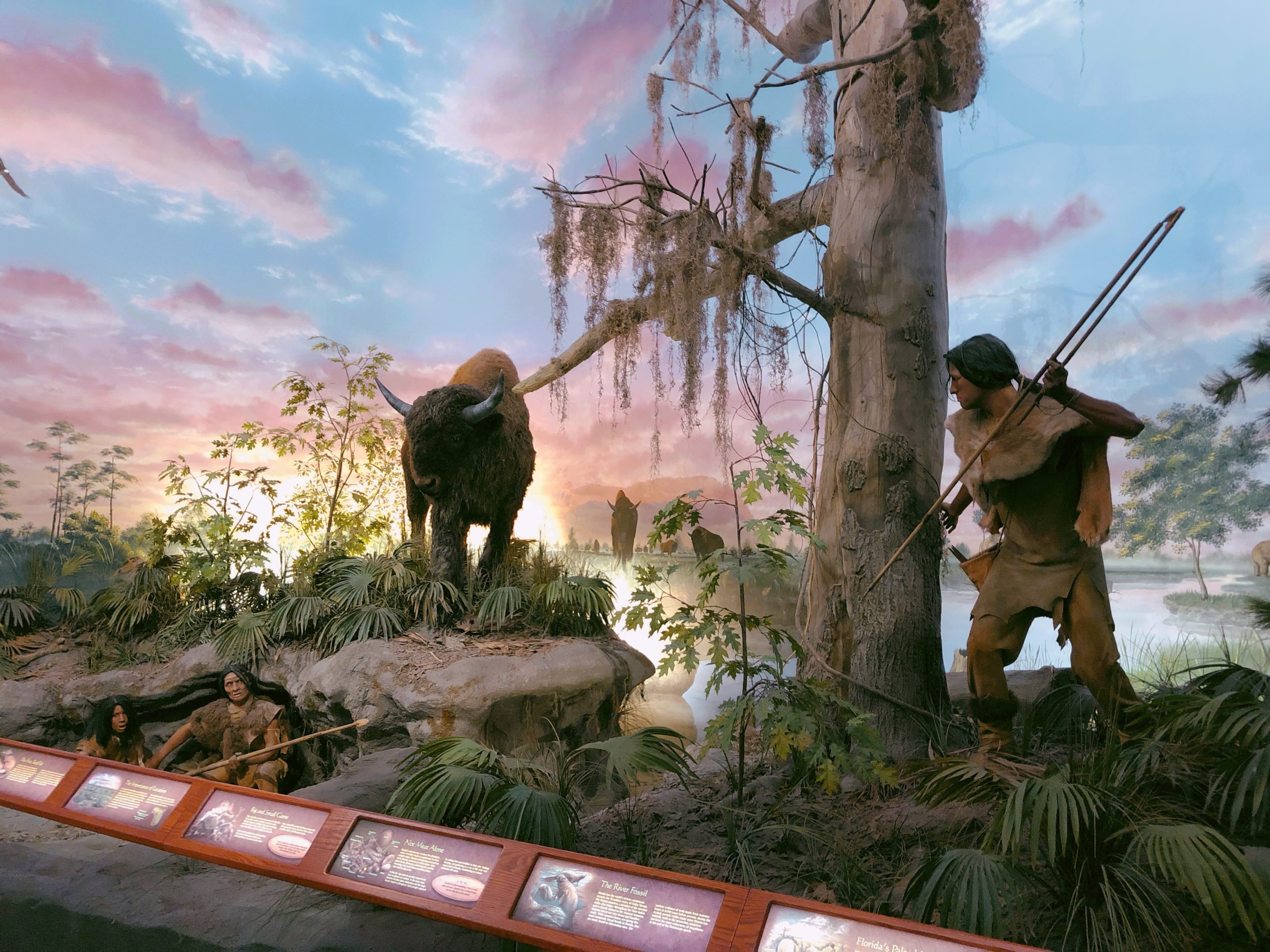
Step Back in Time at the Bishop Museum of Science and Nature ~ Bradenton, Florida
Have you ever wondered what Florida was like when dinosaurs roamed the earth?
Well, wonder no more!
I welcome you to the Bishop Museum of Science and Nature, in Bradenton, Florida! It is home to a museum, the Bishop Planetarium, and the Parker Manatee Rehabilitation Aquarium, all under one roof. I’m telling you, it doesn’t get any better than this.
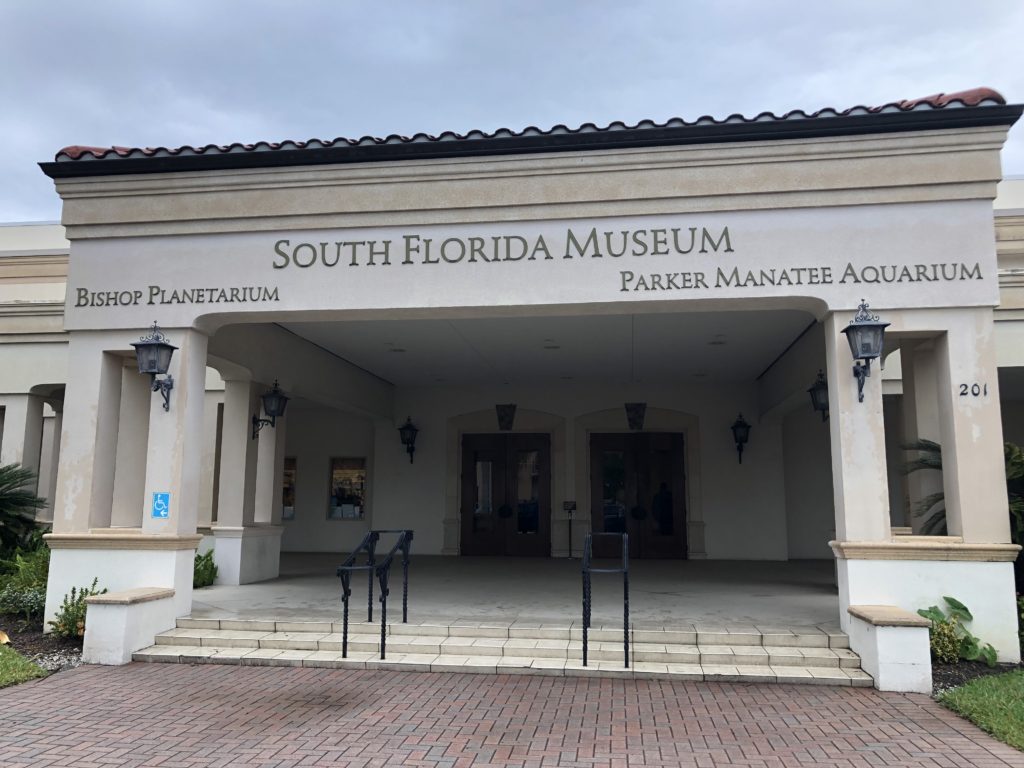
A special thank you to Visit Sarasota County for hosting my husband and I on our recent visit to the Bishop Museum of Science and Nature.
This post may contain affiliate links and we may earn compensation when you click on the links at no additional cost to you.
If I Could Turn Back Time…
Ever since I was younger, I have had an interest in anything having to do with history. I’ve dreamed about living in the Victorian Era while wearing poodle skirts and watching “Jurassic Park.” Whether it took place 50 years ago, or 50 million, I’ve always been intrigued about how things used to be. There is nothing better than when you walk into a place, like the South Florida Museum, and you feel like you have stepped back in time.
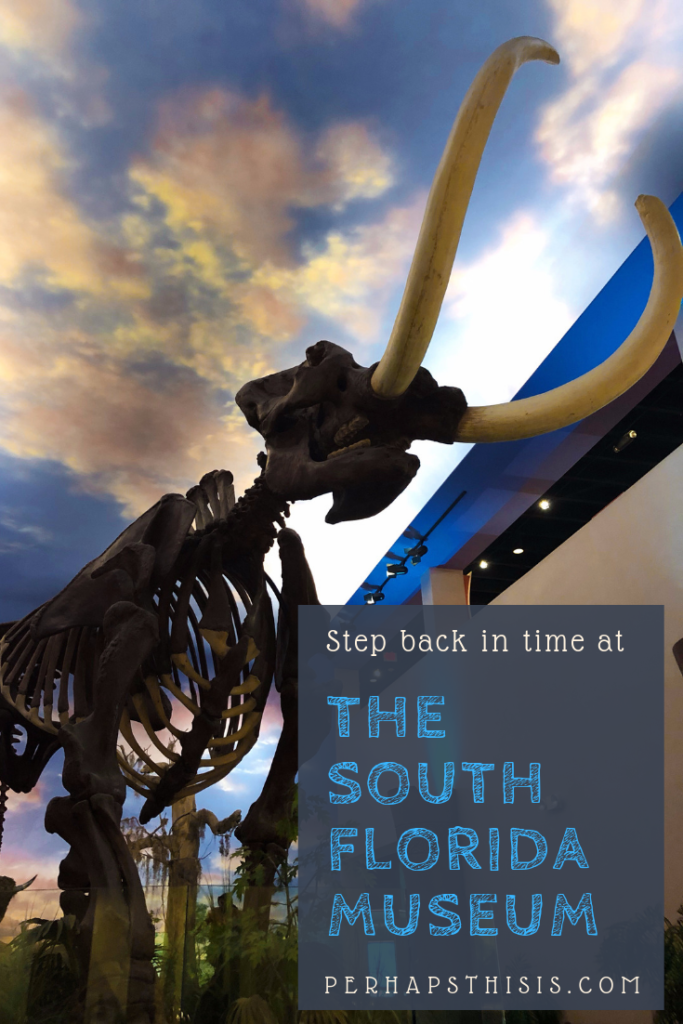
The Bishop Museum of Science and Nature is the largest natural and cultural history museum on Florida’s Gulf Coast. They offer engaging exhibits that highlight Flordia’s history, from the prehistoric to the present, and even take you to the the extreme edges of our universe with a visit to the planetarium. The museum is divided between two floors and the main floor consists of:
- The Planeterium
- The Great Hall
- Land of Change
- Tallant Gallery
- Archaic Peoples
- The outdoor Spanish Plaza
- Underwater viewing area for the aquarium
The second floor consists of:
- River Heritage Hall
- Riverine
- Pine Uplands
- Parker Manatee Rehabilitation Aquarium
- Visible storage area covering nature specimens, artifacts, and geology
If History Repeats Itself, I’m So Getting A Dinosaur!
Main Level
The main level is all about the earliest marine and mammal inhabitants that called Florida home. It also features beautiful archaeological material representing paleoindian, archaic, and indigenous people before contact from outside cultures.
This level of the museum is packed with information and objects that let you dive deeper into the prehistory of Florida’s Gulf Coast. So let’s get started!
The Great Hall
Immediately when walking inside the museum, you are greeted by a full size Wooly Mammoth! Imagine that thing roaming around while you’re at your kids soccer game! You can’t help but be taken aback by the sheer size of it.
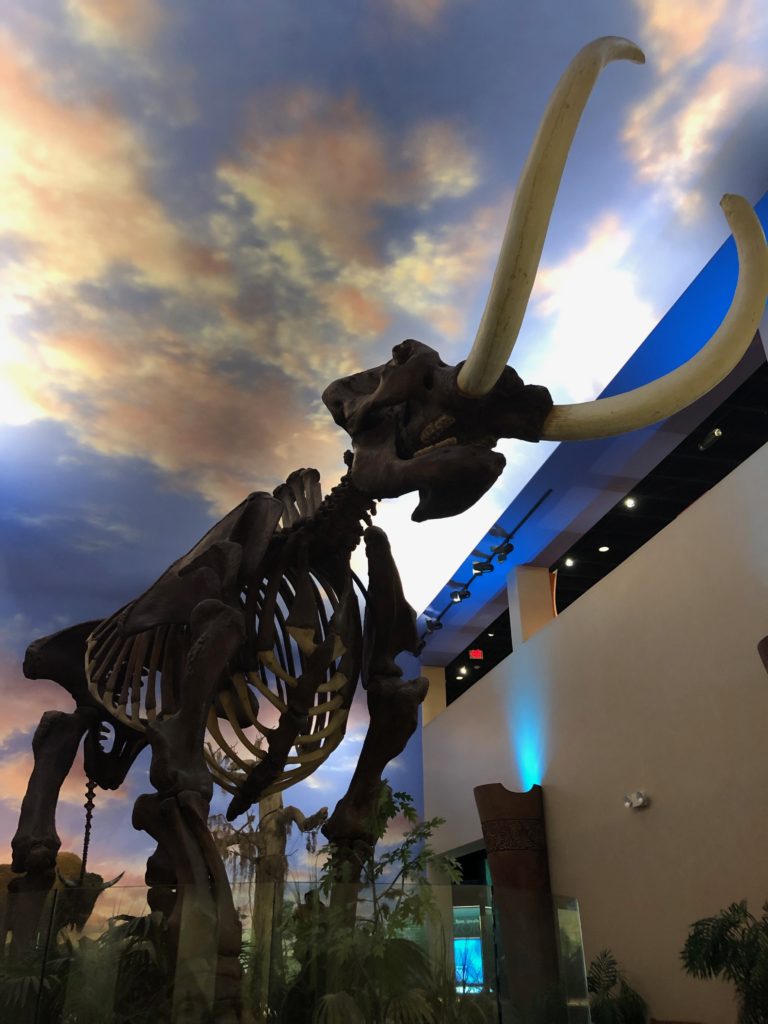
There are beautiful dioramas depicting indigenous people during a hunt, and they are so life-like that you will feel like you’re part of the hunt.
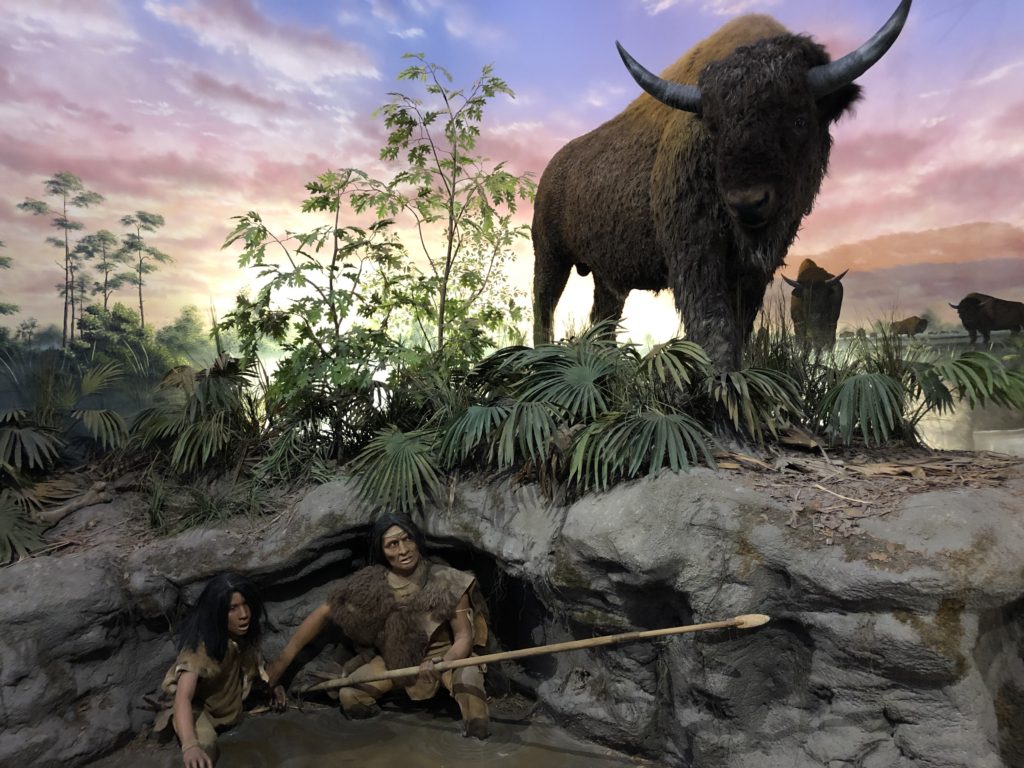
Land Of Change
The Land Of Change is all about how animals, and people, have adapted to change. The Cenozoic era is the current era we are in, present day, and dates back to 66 million years ago.
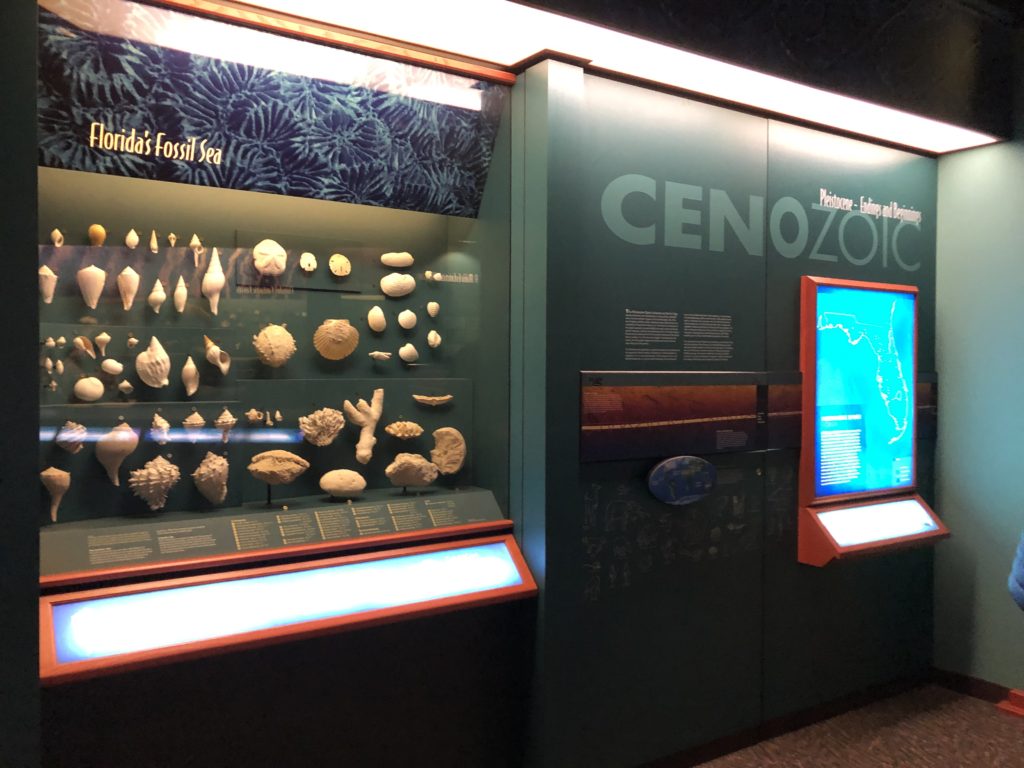
It is amazing to think that creatures such as manatees and alligators may have been around for millions of years.
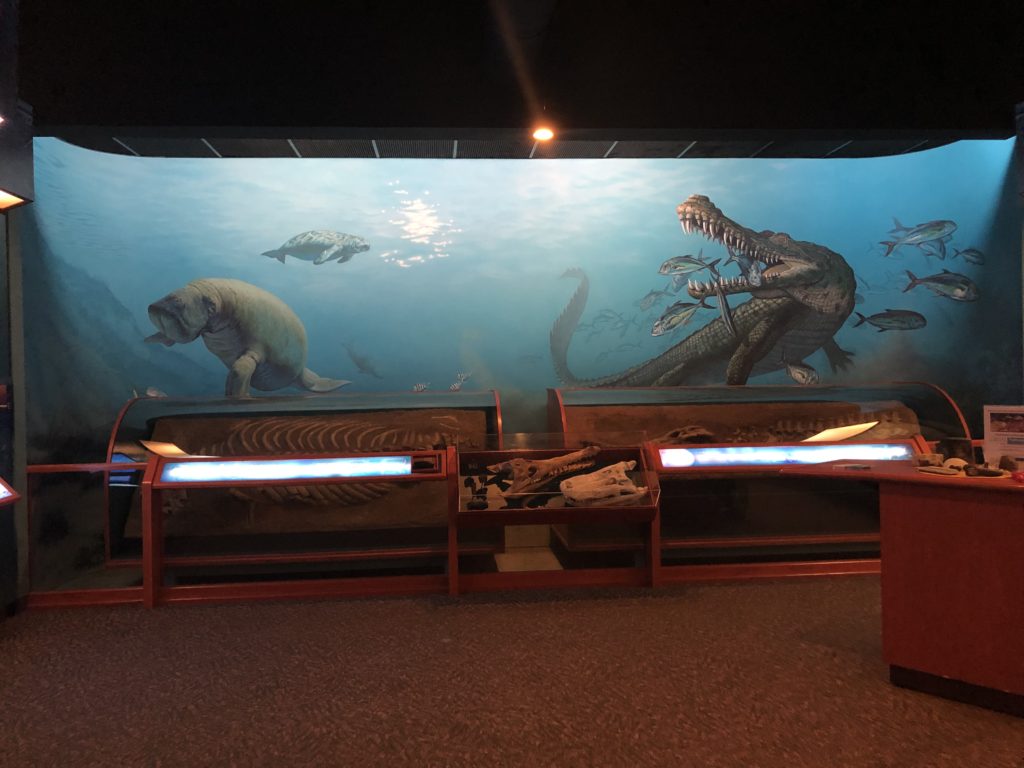
The museum also has a Megalodon jaw with real, fossilized teeth. A Megalodon, which means “big tooth,” is a species of shark, related to a great white shark that lived over three million years ago. I can tell you, that after standing next to it, I am glad I don’t have to worry about that thing while I’m swimming!
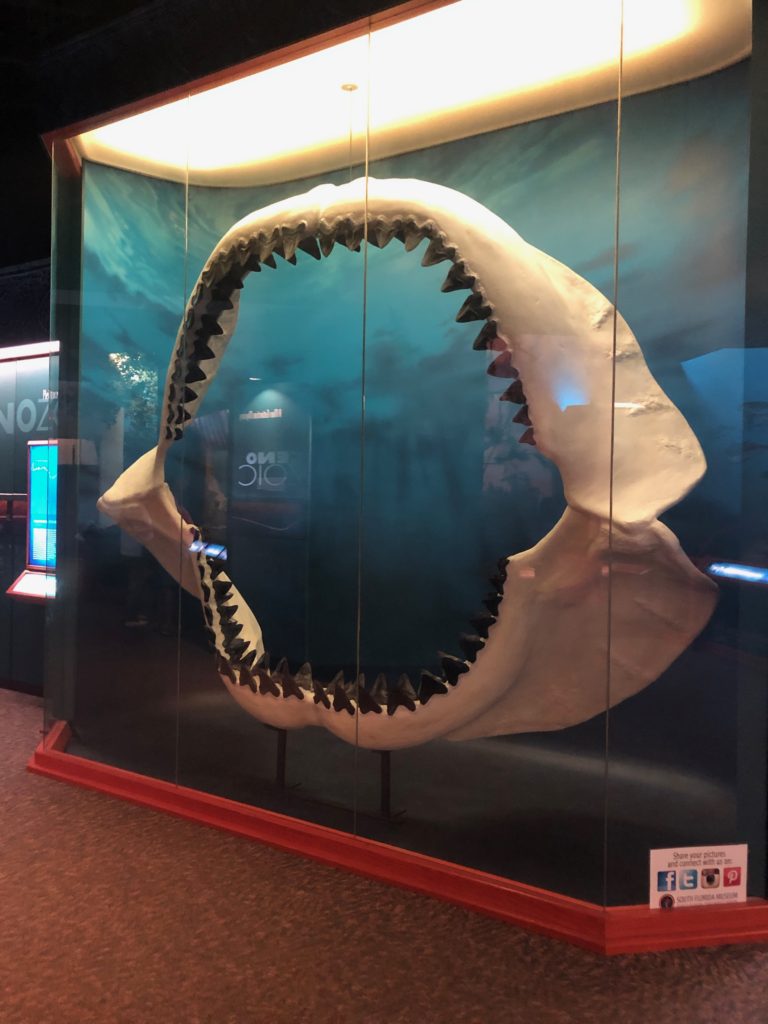
(Don’t forget to check out the other place we visited while in Florida, that also has a Megalodon jaw!)
One of our favorite exhibits was all about the genus Equus. What is Equus? Meaning “horse” in Latin, it is a genus of mammals that includes horses, donkeys, and zebras.
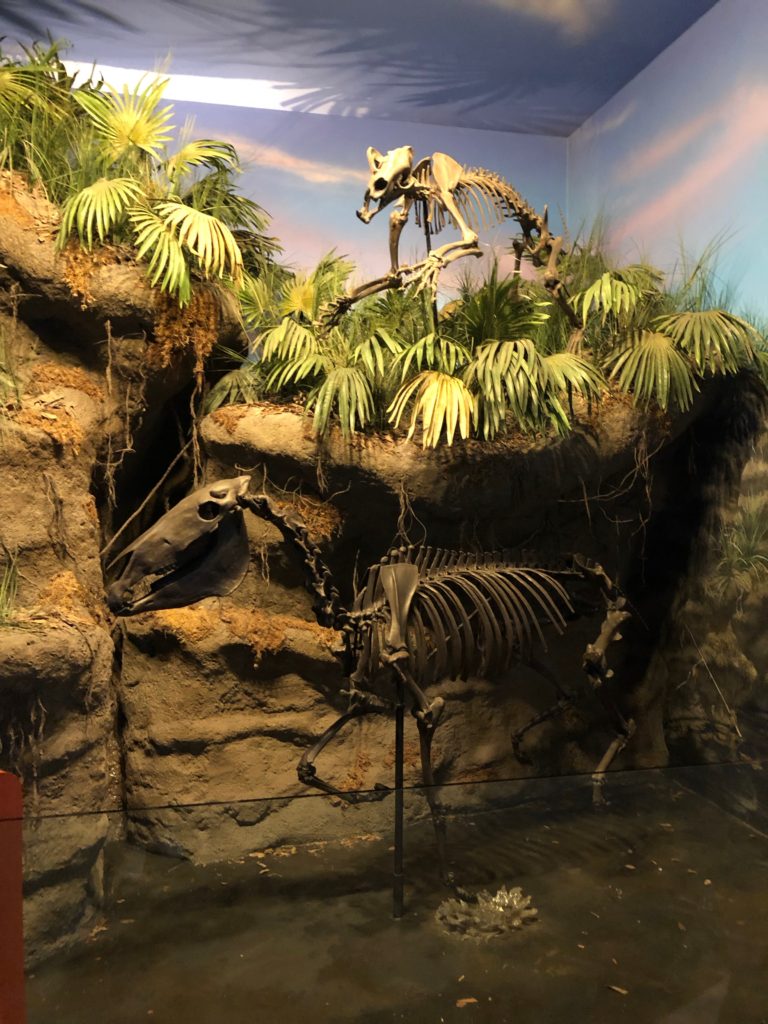
The night before our visit to the museum, we had finished watching a two part program on PBS Nature entitled, “Equus: The Story of the Horse.” Unaware that the museum even had this display, it was amazing to watch my children make the connections between what they learned while watching the show, and what they were now seeing right before their eyes.
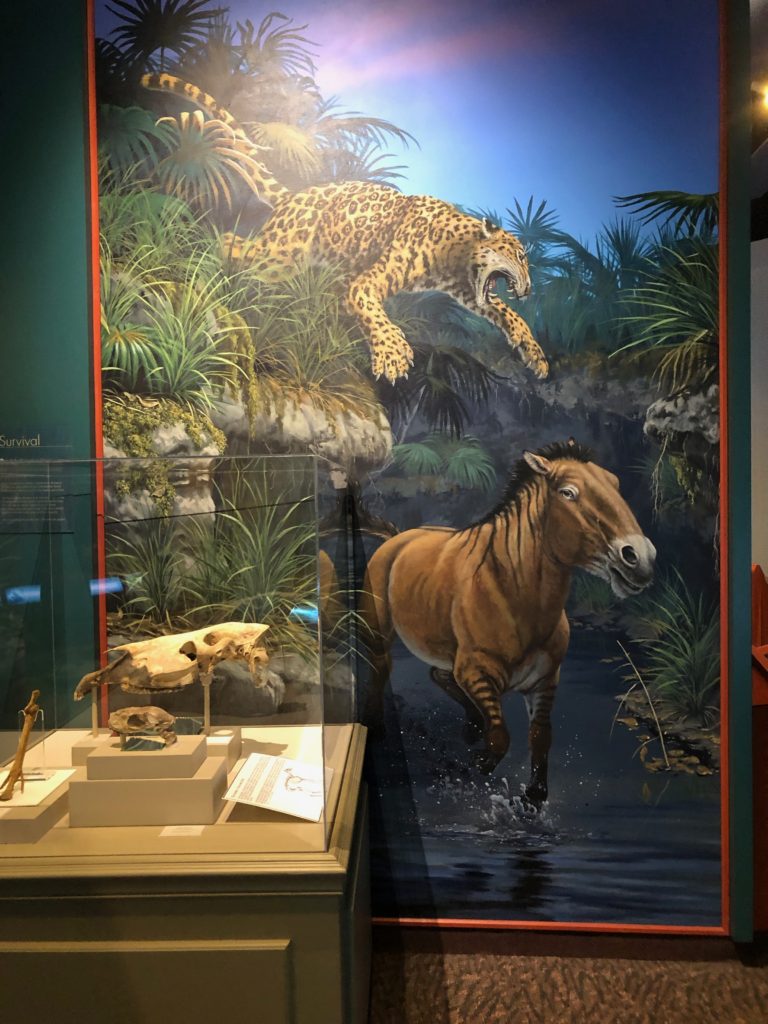
The episodes talked about how horses have evolved and how our relationships with them have developed throughout history. Horses are believed to have evolved from the Mesohippus, which means “middle horse.” It was a small, about 24″ tall, three-toed forest dweller whose diet mainly consisted of soft twigs, leaves, and fruit.
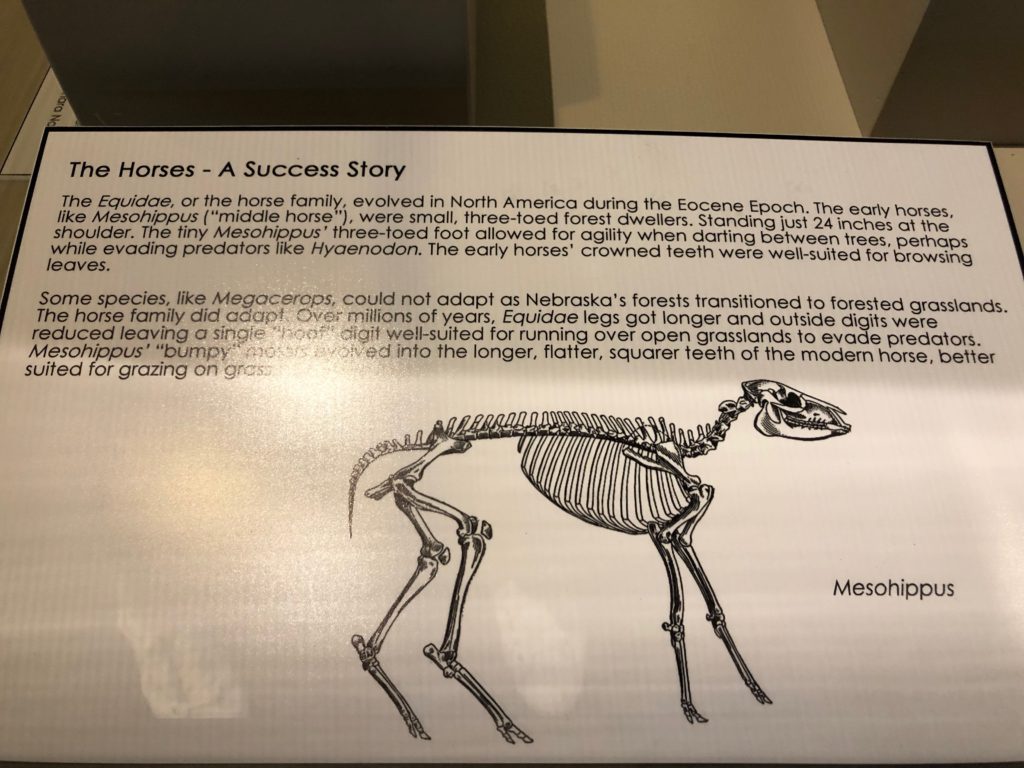
Throughout time, they transitioned from being forest dwellers with three toes, to the present day horses that we know, with hooves and who thrive in grasslands. If you haven’t seen this episode of PBS Nature, I highly suggest you do. It was incredible!
Archaic Peoples
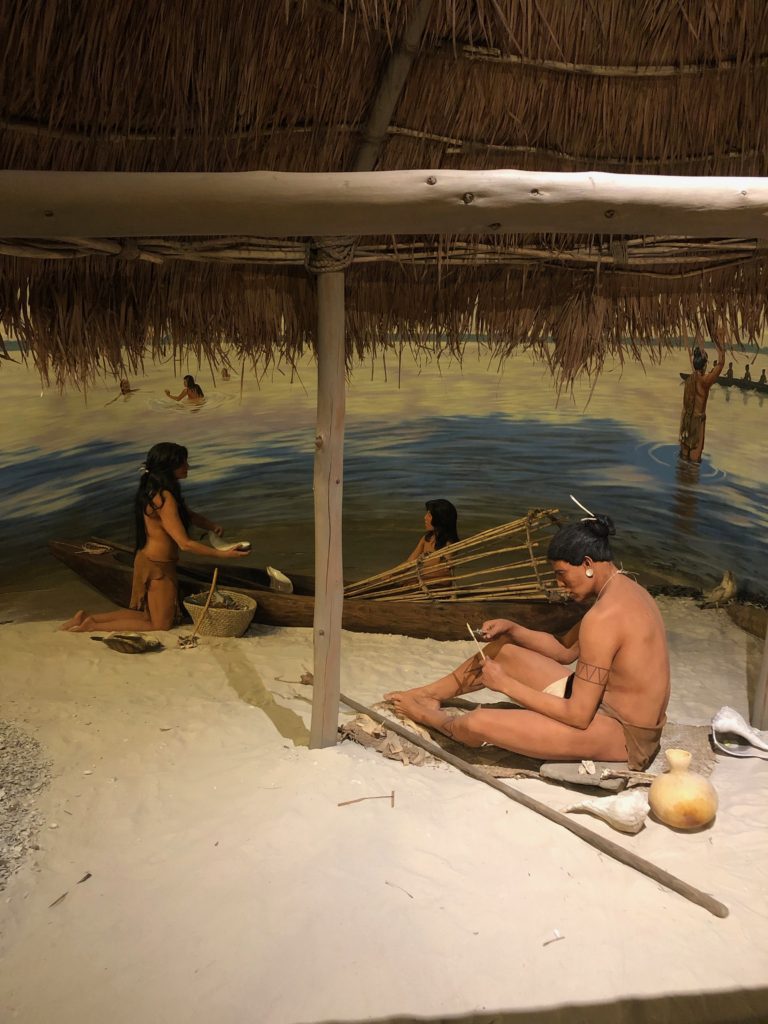
Southwest Florida Archaic cultures were people of the water. They lived near the Gulf of Mexico and they depended on it for survival.
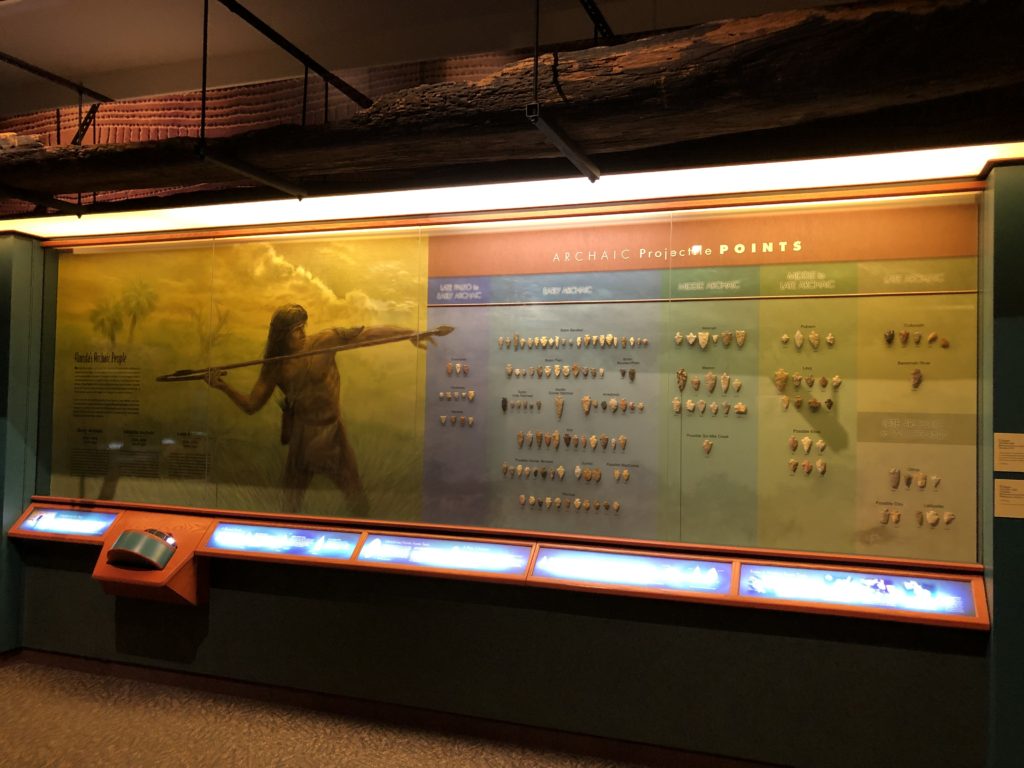
They crafted projectile points, also known as arrowheads, from flint to aid in their hunting of large wild animals. One of the most used resources- wood- was used to create things such as vessels, handles, spears, stakes, and even dugout canoes. There is a real one hanging from the ceiling in the picture above. Very few of the wooden artifacts have survived due to Florida’s acidic soil and harsh climate.
The Tallant Gallery
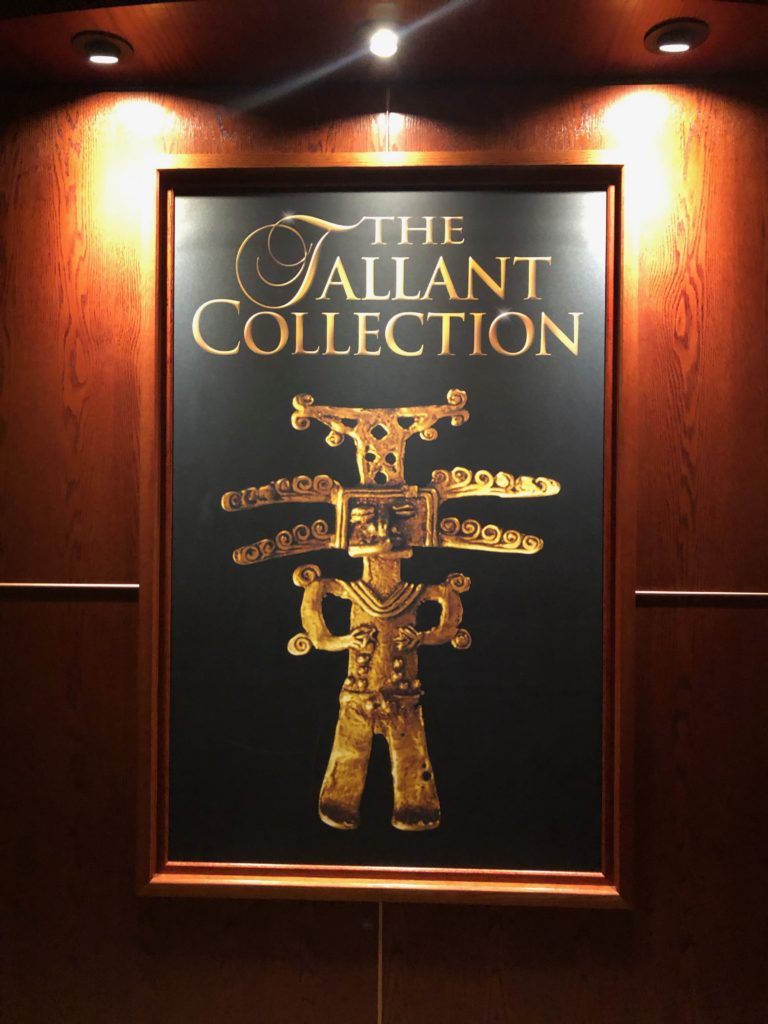
The Tallant Gallery is full of archeological artifacts collected throughout Florida by Montague Tallant. He was a furniture store owner in Bradenton, and is known for establishing the foundation for the South Florida Museum.
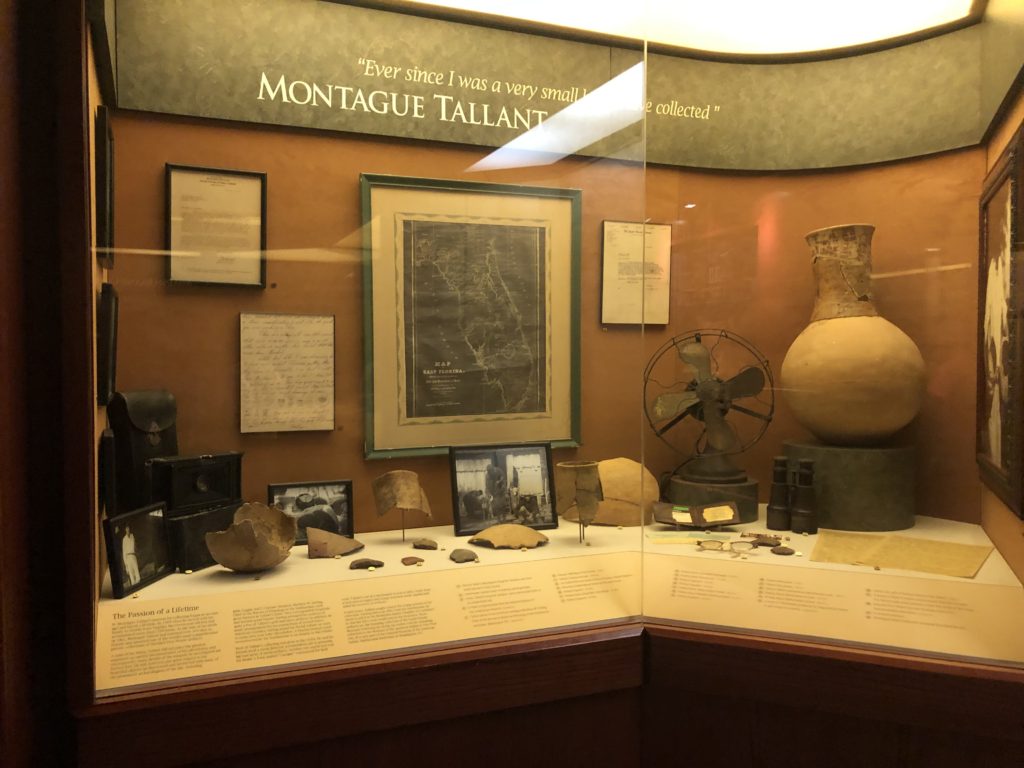
Tallant went on frequent pottery hunting activities in Florida which led to a large collection of aboriginal pottery, stone, and shell tools. There is even European material that was used during the early Spanish exploration and settlement of Florida.
If I Could Reach the Stars…
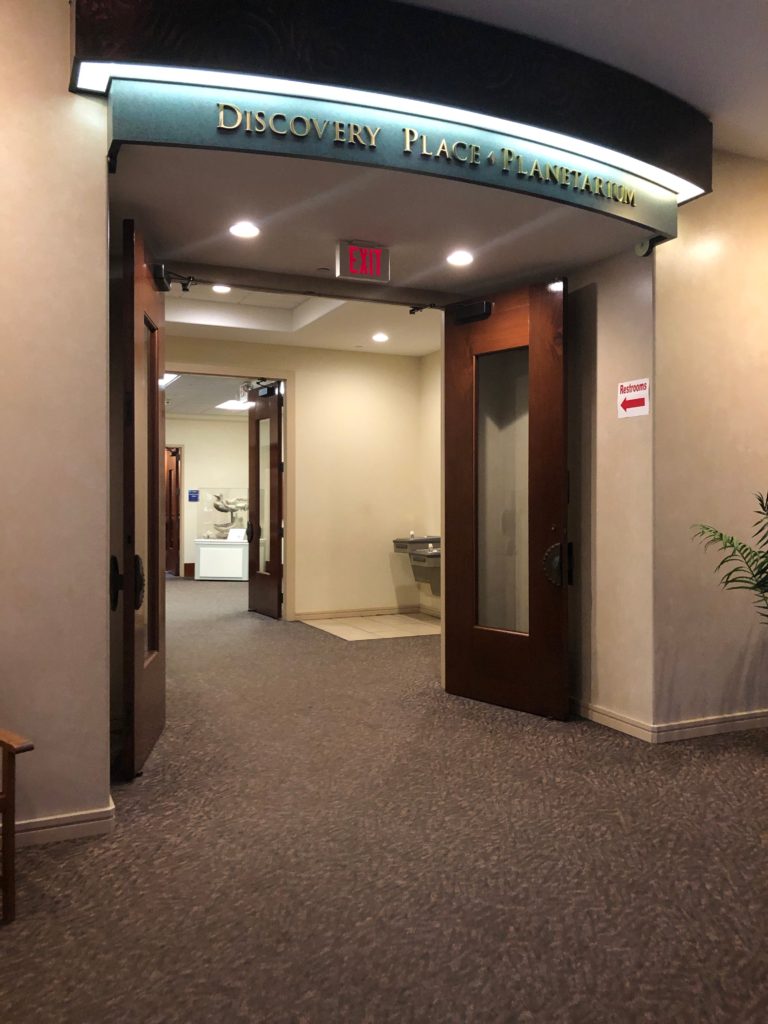
The full dome Bishop Planetarium features one of the most advanced all-digital projection systems in the world! They offer programs throughout the day that the whole family will love! They range from 25-40 minutes, and include shows that are geared toward families with younger children.
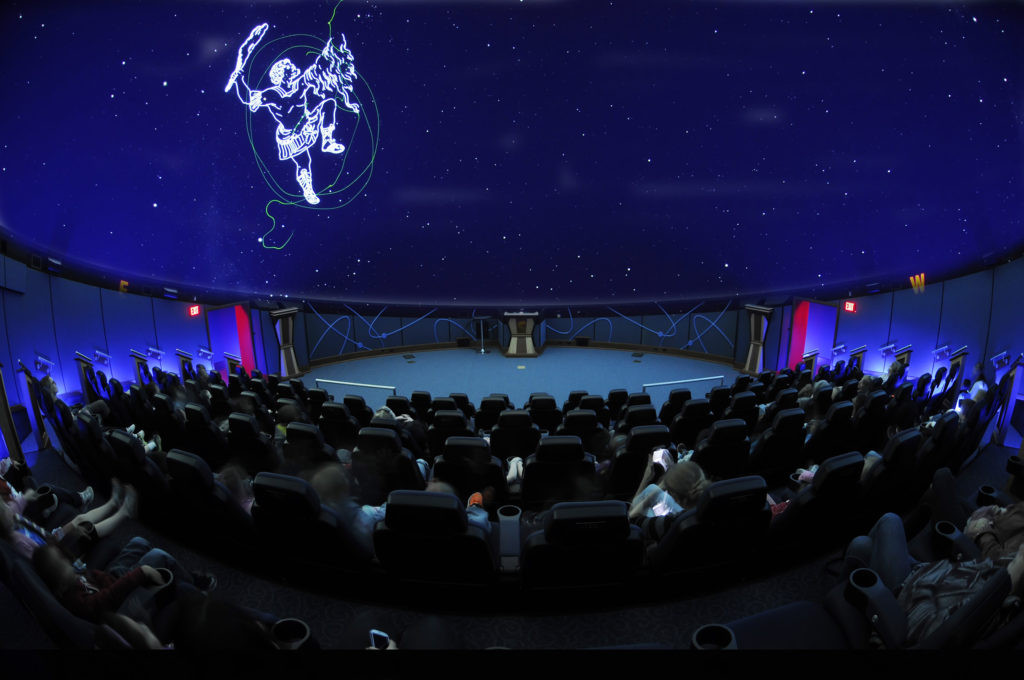
Used with Permission
They offer stadium style seating which gives everyone an incredible view of the vast edges of our universe, and beyond. During our visit we were able to take part in their show entitled, “This Month’s Skies.” It is a 40 minute live show, so we were able to ask questions while they manually changed the sky to focus on the questions at hand.
Spanish Courtyard and Underwater Viewing Area
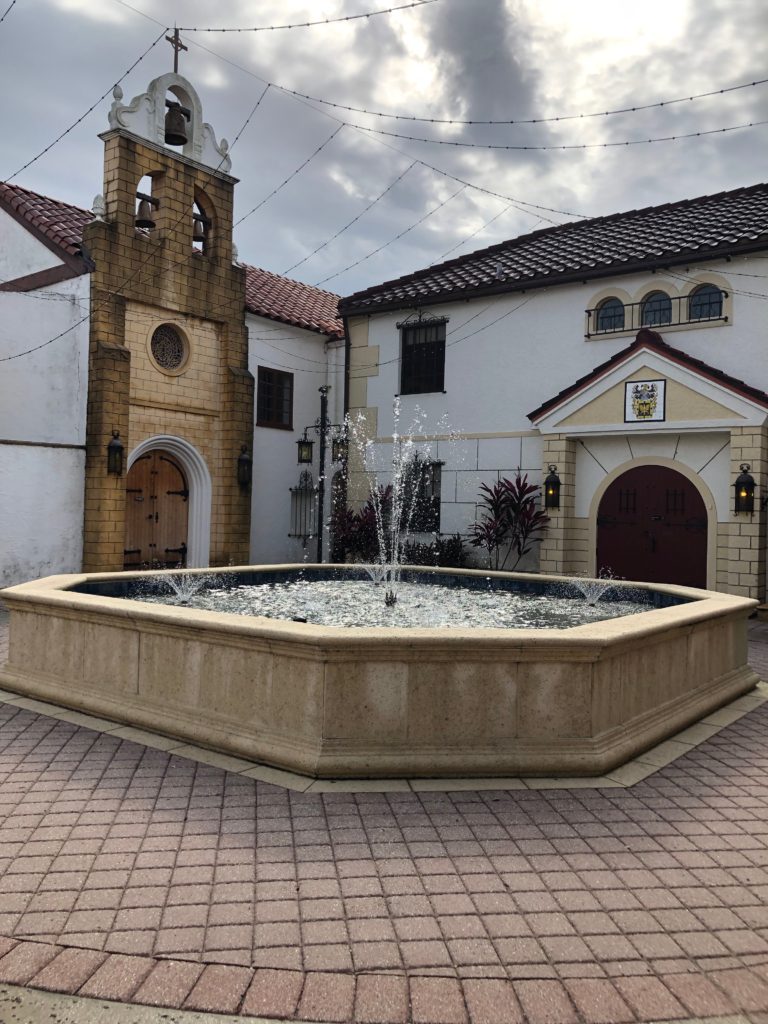
Venture outside to the courtyard to see a 16th-century chapel and a full-scale replica of Hernando DeSoto’s home in Barcarrota, Spain. Hernando is best known for leading the first Spanish and European expedition into the territory that would later become Florida, Georgia, Alabama, Mississippi, and most likely Arkansas.
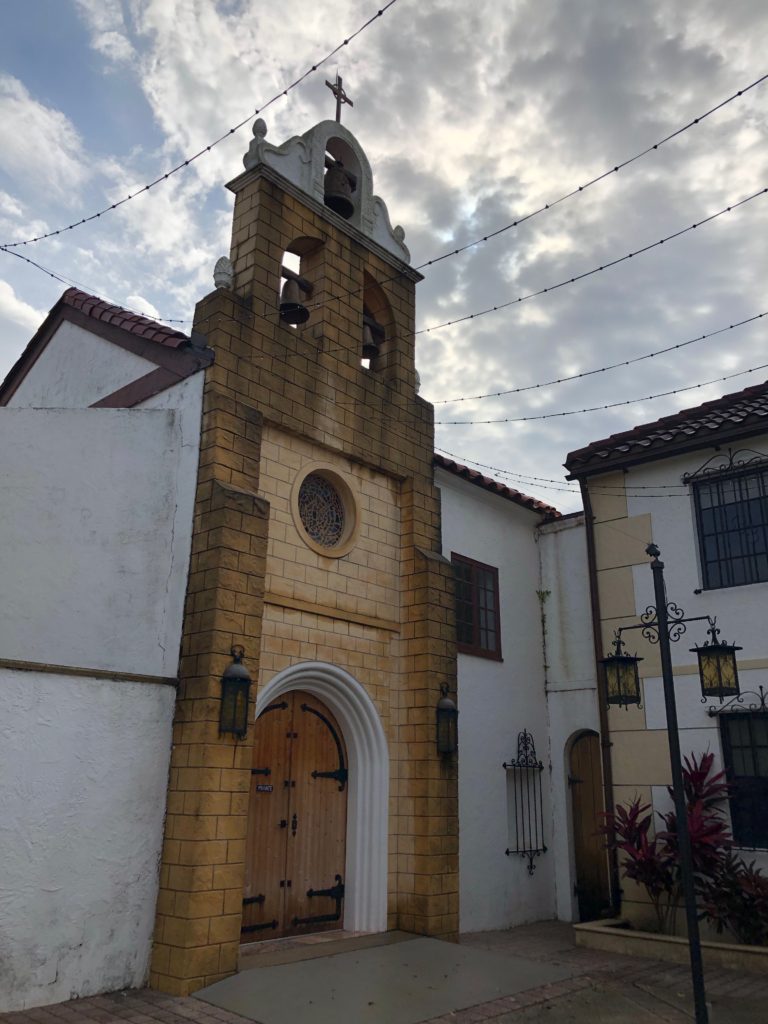
The beautiful columns, arches, lamp posts, and wrought-iron gives you the chance to step back into the elegance of another time. As you walk through the plaza, you can get a glimpse of the underwater viewing area of the Parker Rehabilitation Aquarium. Watch the manatees as they glide effortlessly under the water, and snack on tons of leafy greens.
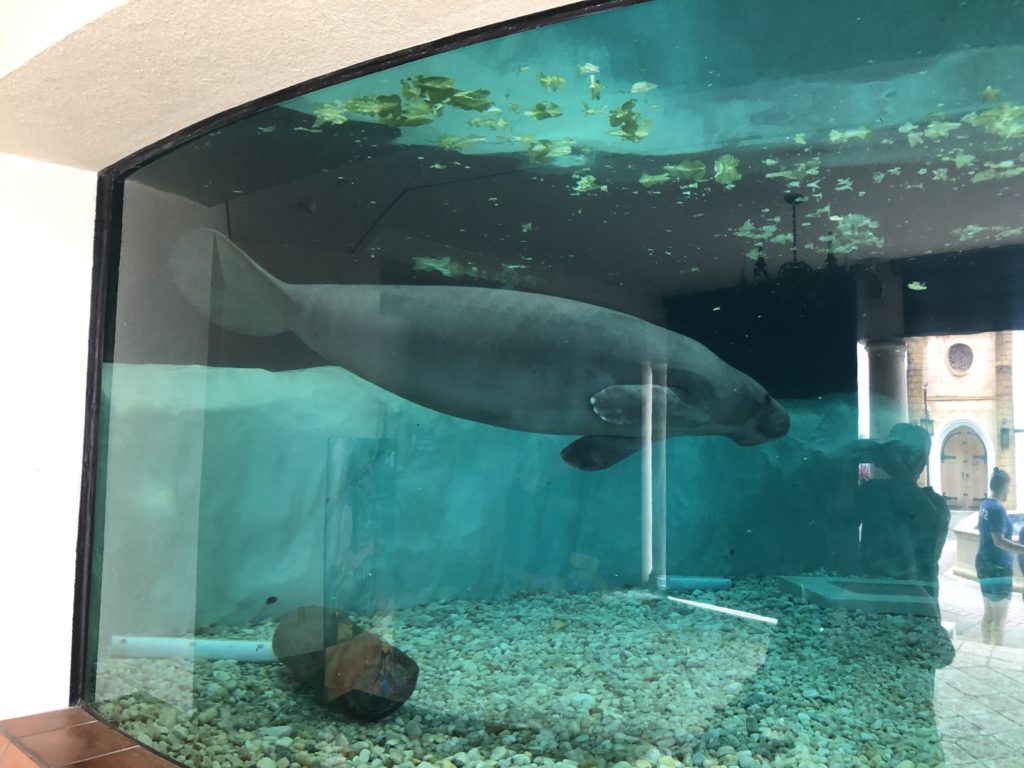
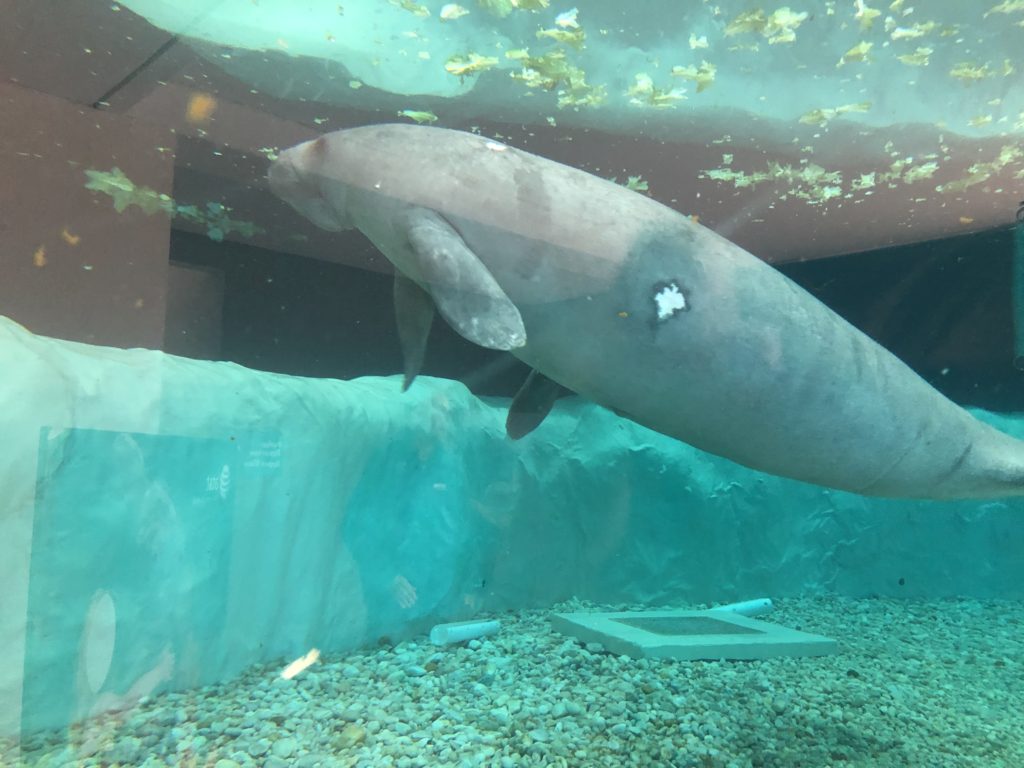
Second Level
Just when you think you’ve seen it all, I welcome you to the second level of the museum. It is packed with more fascinating exhibits, artifacts, and the entrance to the aquarium.
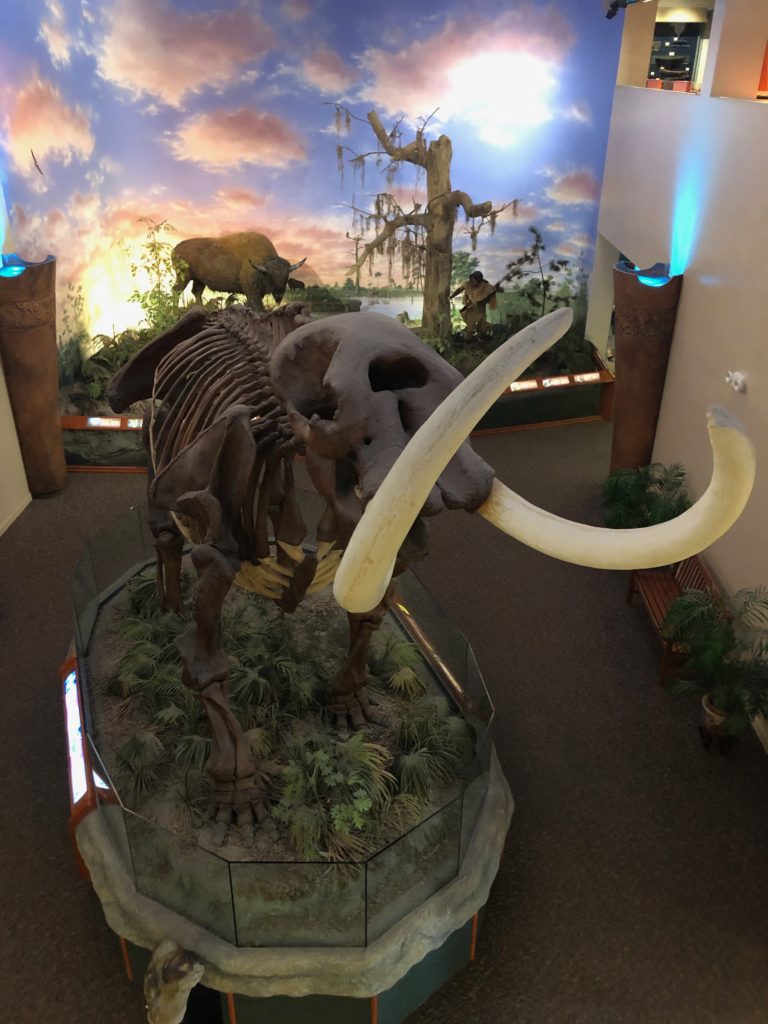
Remember the Wooly Mammoth we saw when we entered the museum? On the second level you get to experience it on a whole other level (literally!). Not many places offer you the opportunity to almost look a Wooly Mammoth in the eye. Part of the second floor is open to the main floor and a section of the wall allows children the chance to see this large skeleton, up close.
River Heritage Hall
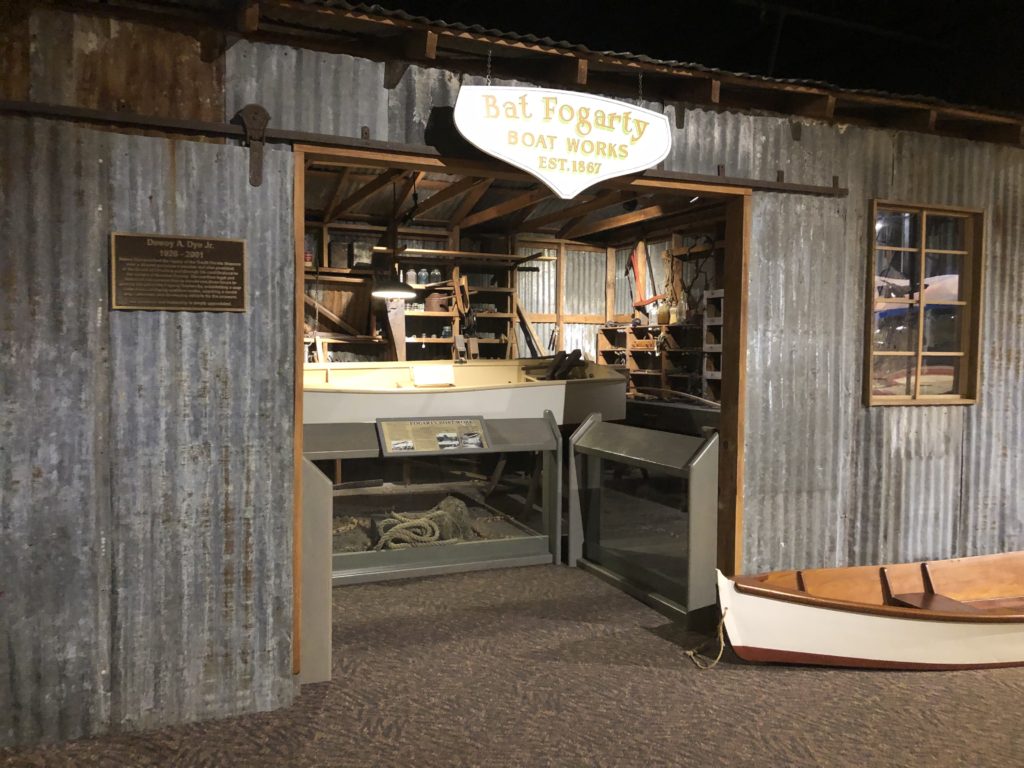
The River Heritage Hall gives you the chance to see what Florida was like in the early 20th century. Get a peek into the local culture and geography of the community, whether that was visiting a boat shop, or filling up your car at the local Shell station.
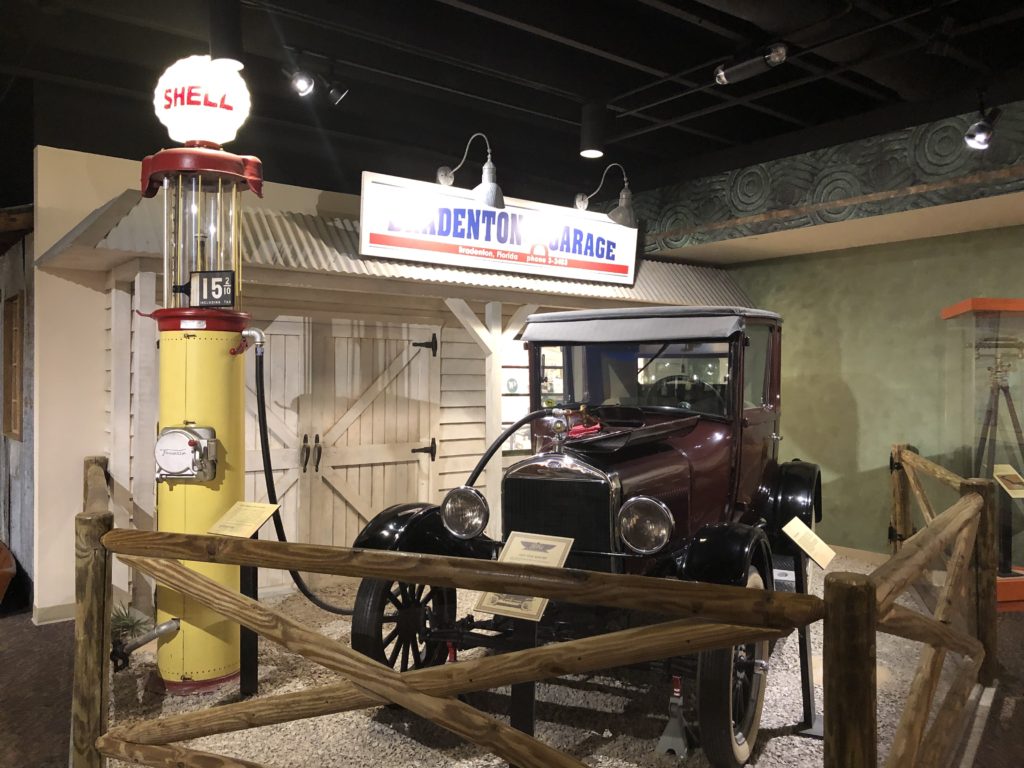
Immerse yourself in tons of local maritime history, complete with model ships, boat building tools, and antique navigation tools.
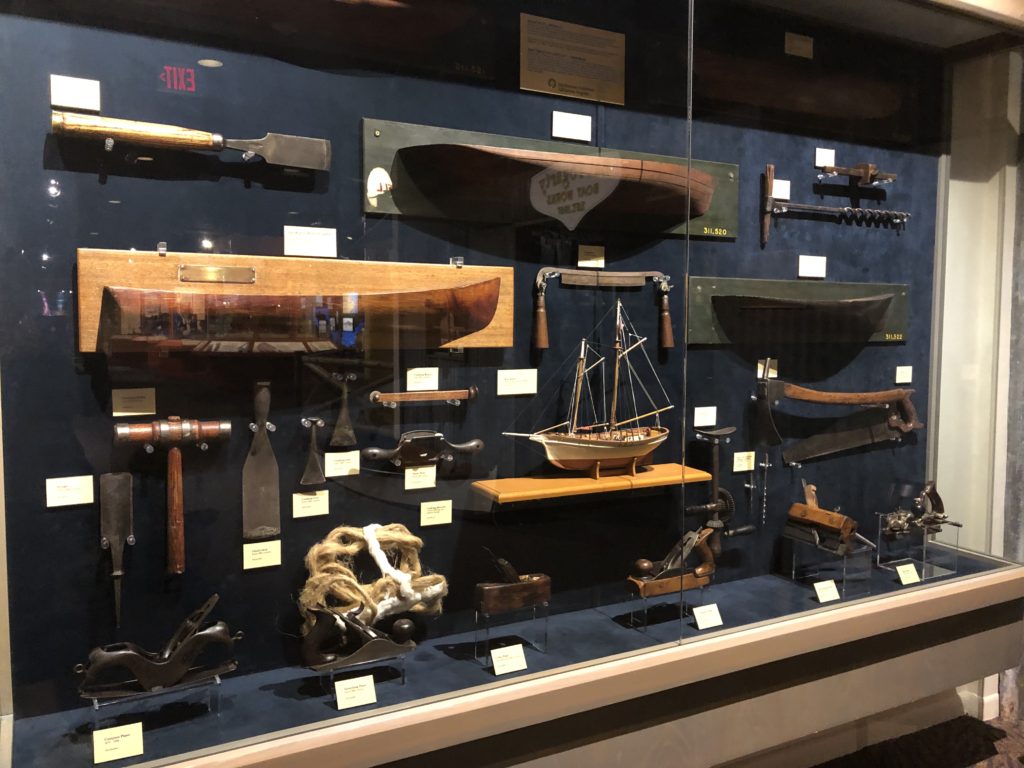
There is even a real dugout canoe on display.
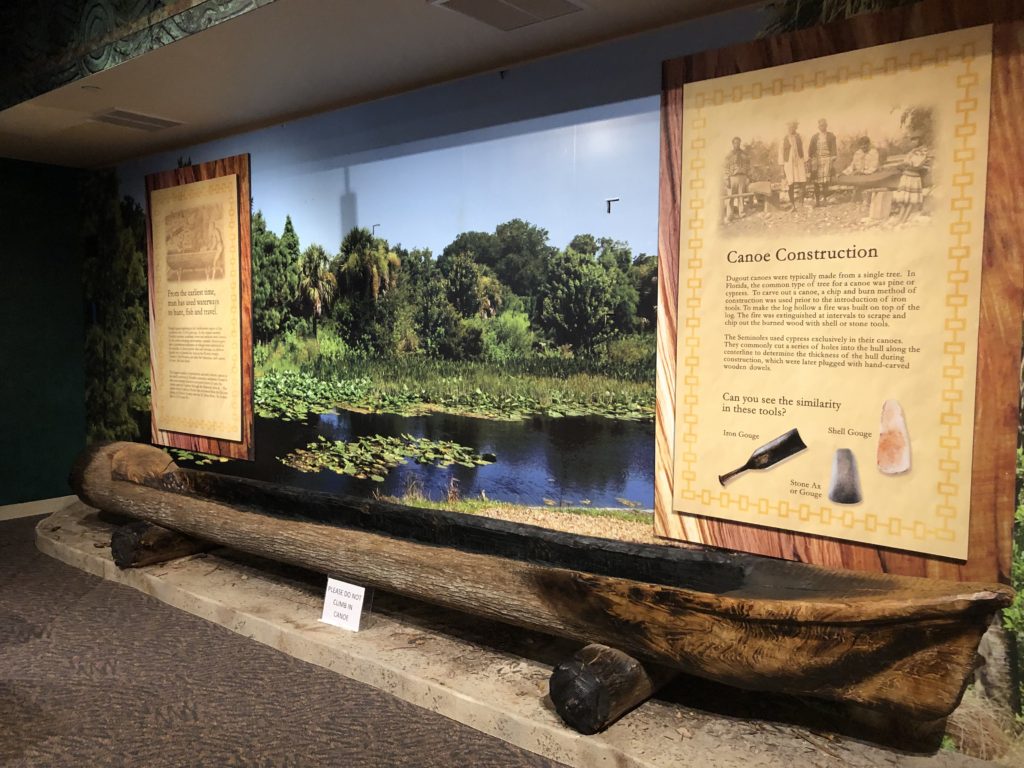
Environmental Hall
Riverine
The Riverine gallery is all about the plants and animals that reside in Florida’s inland wetlands and deep-water habitats. Animals such as alligators, crocodiles, turtles, lizards, and birds thrive in Florida’s freshwater rivers and streams.
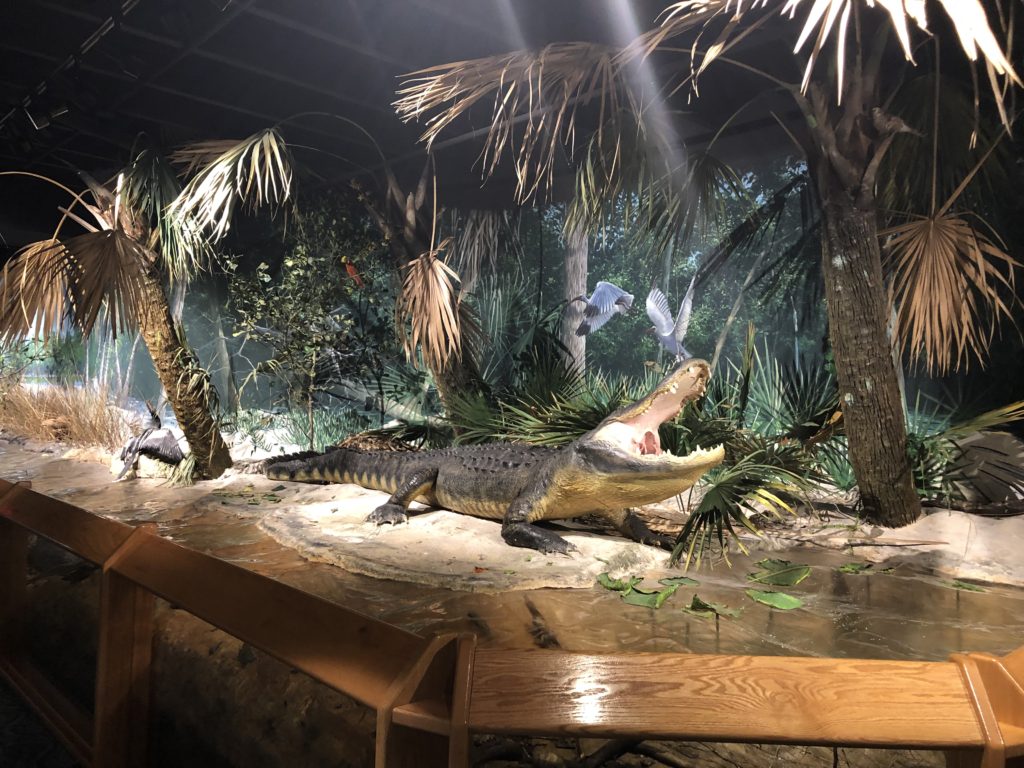
Both the Riverine and the next gallery, the Pine Uplands, play an important role in educating visitors about Florida’s ecology and bio-diversity.
Pine Uplands & Entrance to the Aquarium
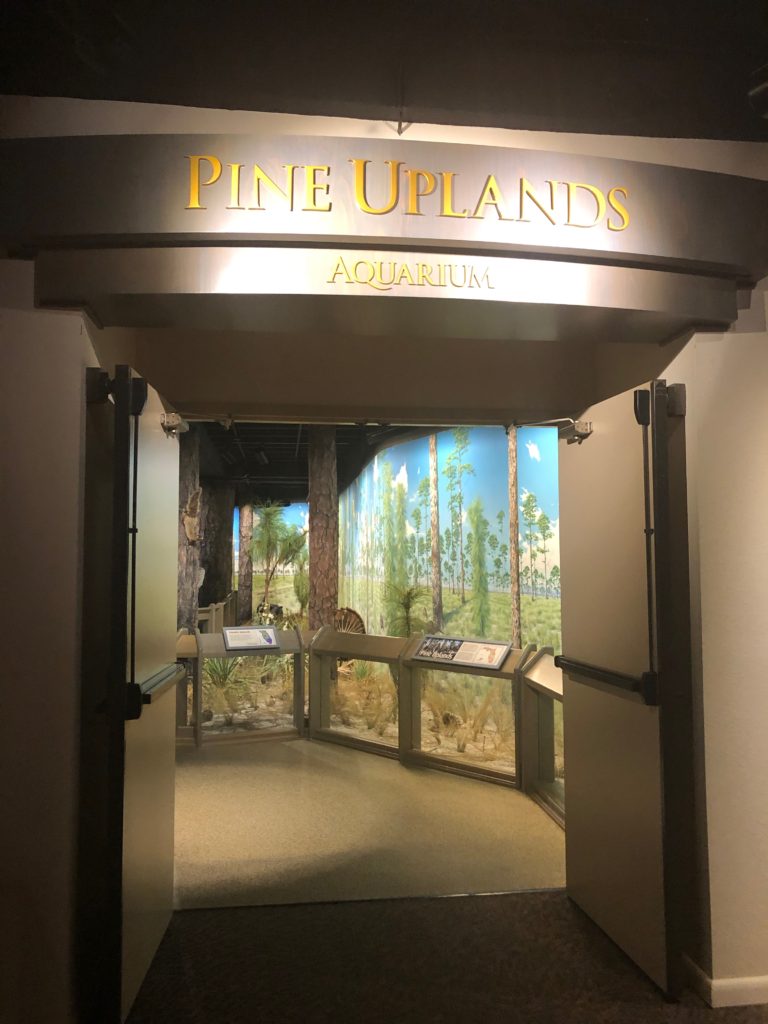
Florida’s Pine Uplands is a low, flat area that has poorly drained, acidic, sandy soils. It is an ecosystem that is dominated by widely spaced longleaf pines, few shrubbery, and a dense ground cover of grasses.
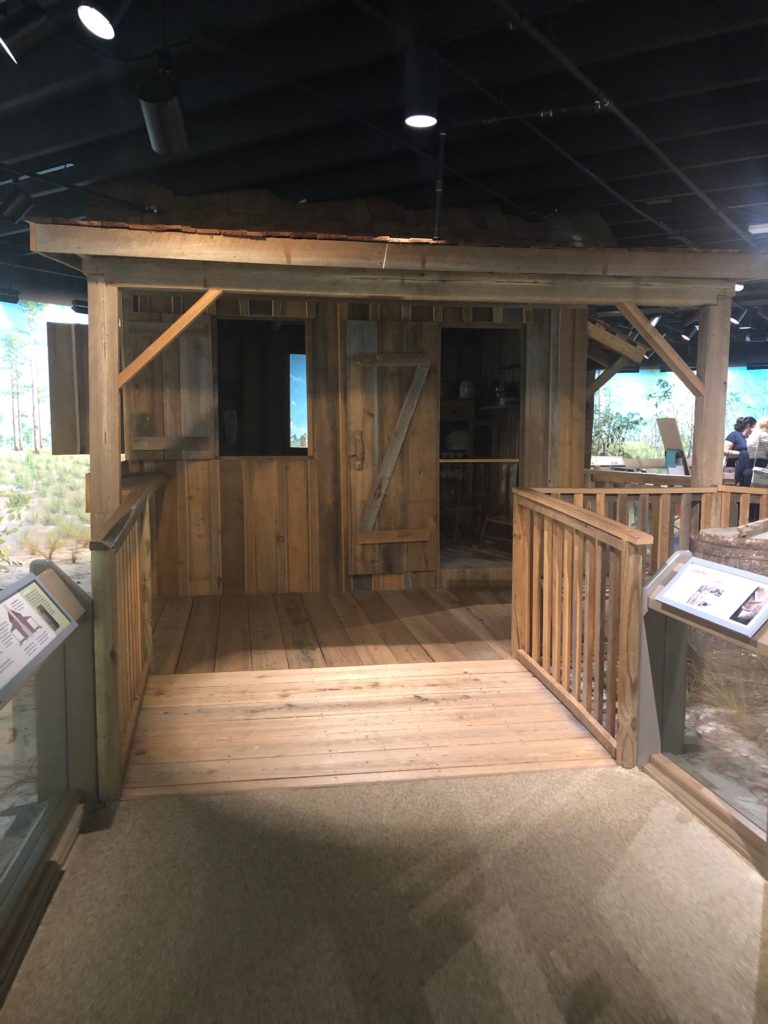
Get an up-close look at how an early settler in the Uplands might’ve lived.
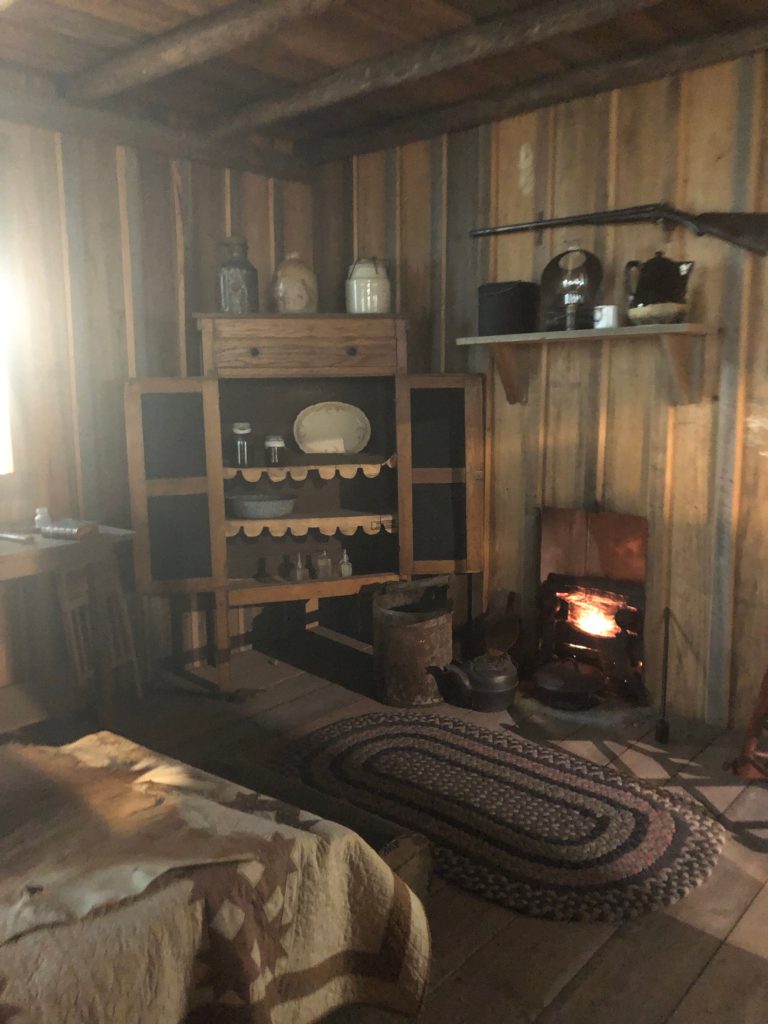
It is filled with period-correct artifacts and surrounded by wildlife that are still currently found in Florida. Animals such as white tailed deer, panthers, sand hill cranes, turtles, and snakes make their homes in the Pine Uplands.
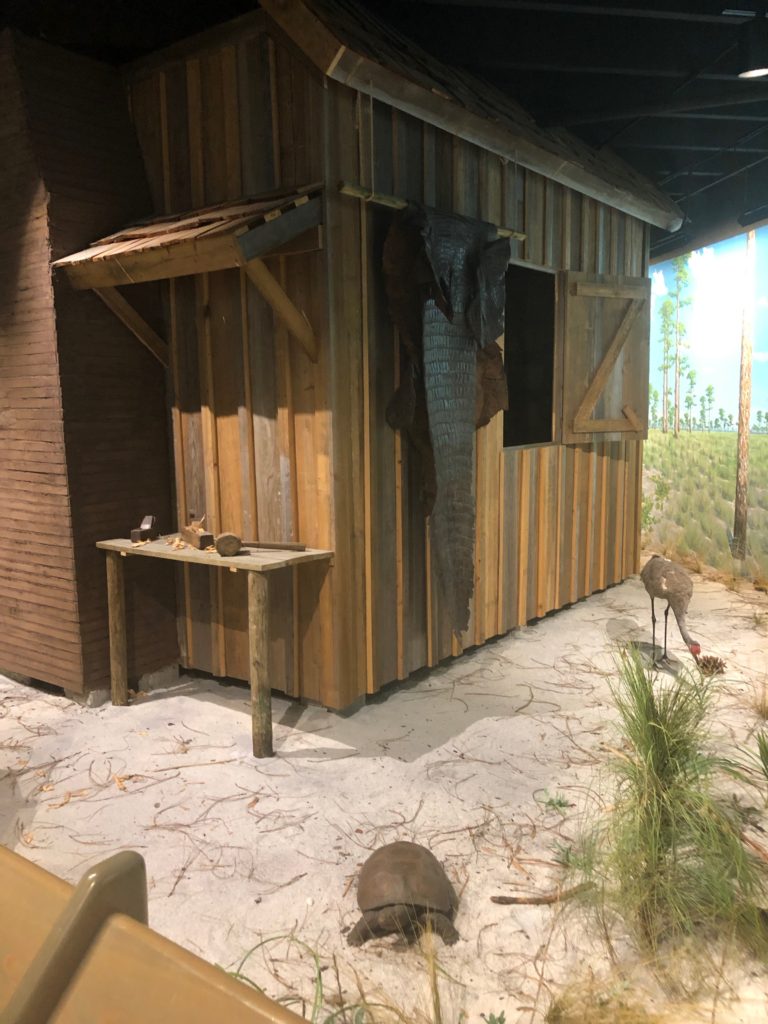
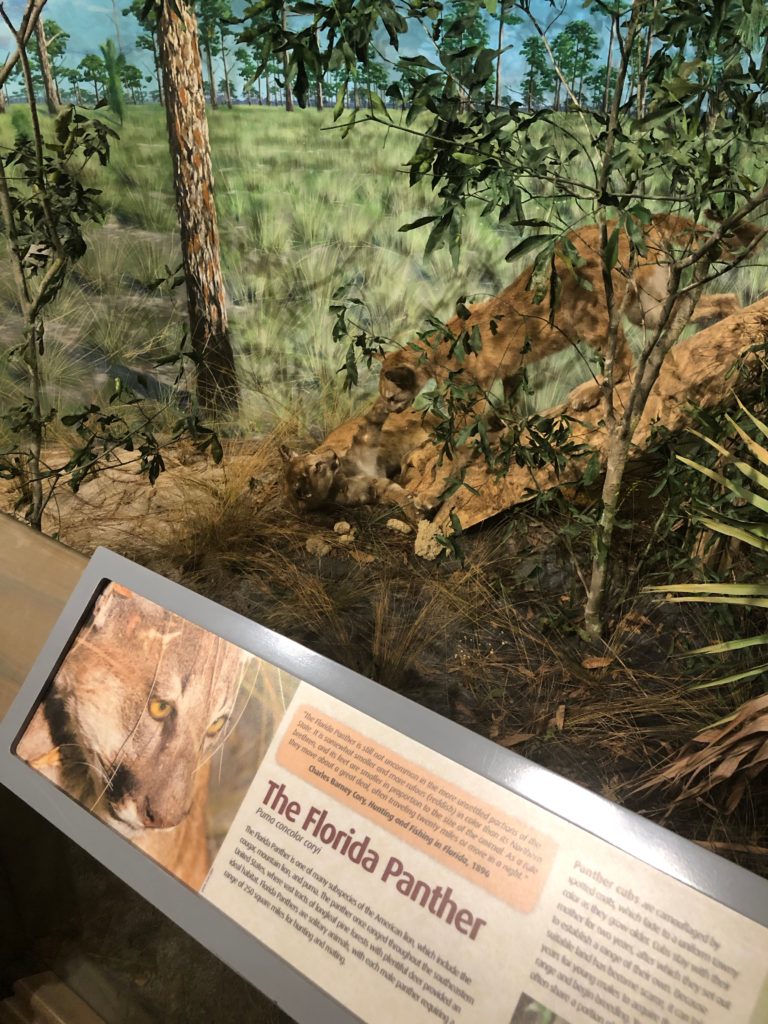
The Visible Storage Gallery
Every museum I’ve ever been to, I’ve always wondered…
“What else do they have?”
“They can’t possibly have everything on display, all the time, right?”
Behold the Museum’s Visible Storage Gallery. In this section of the museum, portions of their extensive collection are rotated for viewing. That means, you can come back over and over again, and see something new each time.
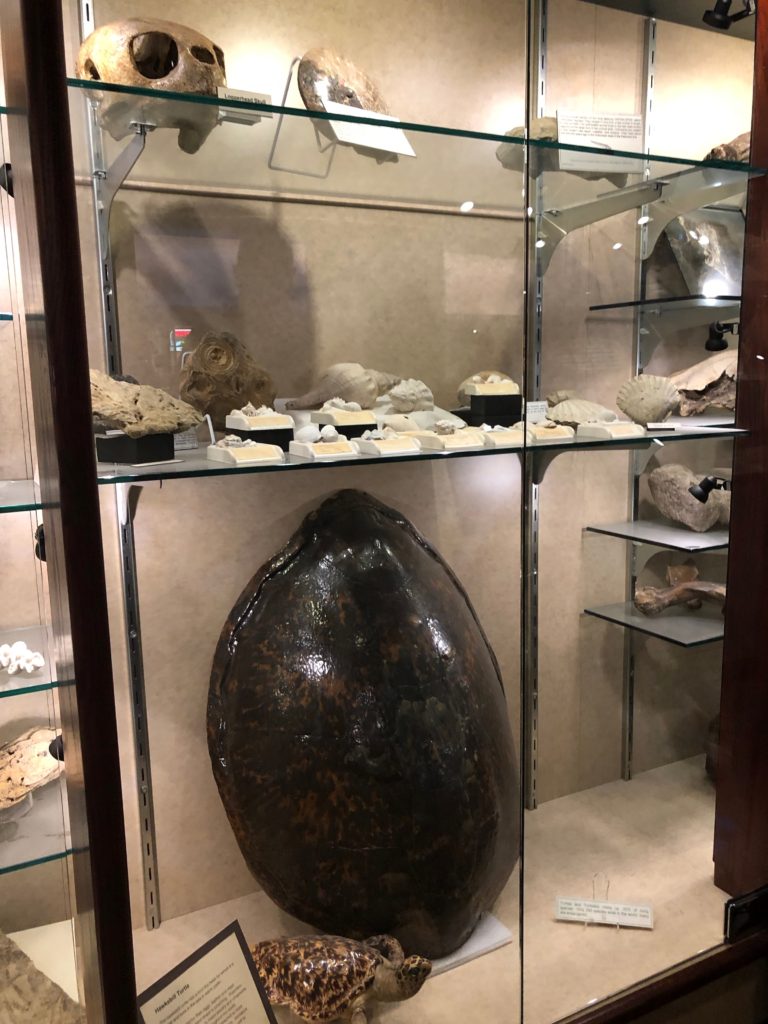
Parker Manatee Rehabilitation Aquarium
Hold your breath! Prepare yourself to dive deep into the coastal waterways of Florida.
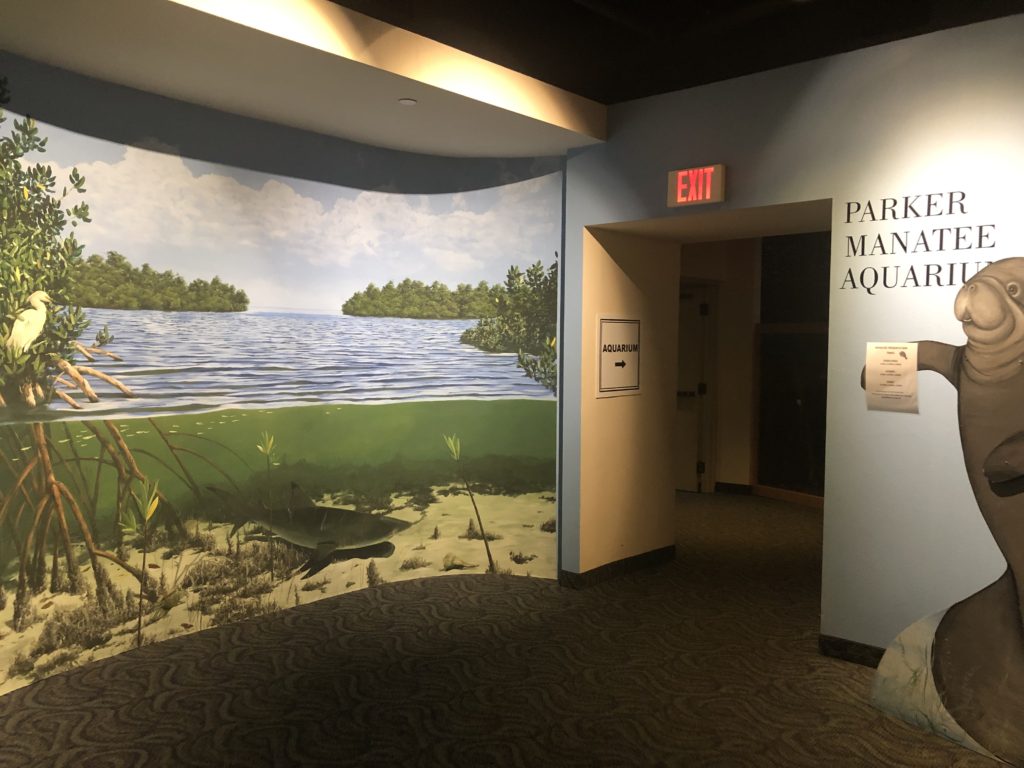
The walkway to the aquarium will make you feel like you are walking underwater.
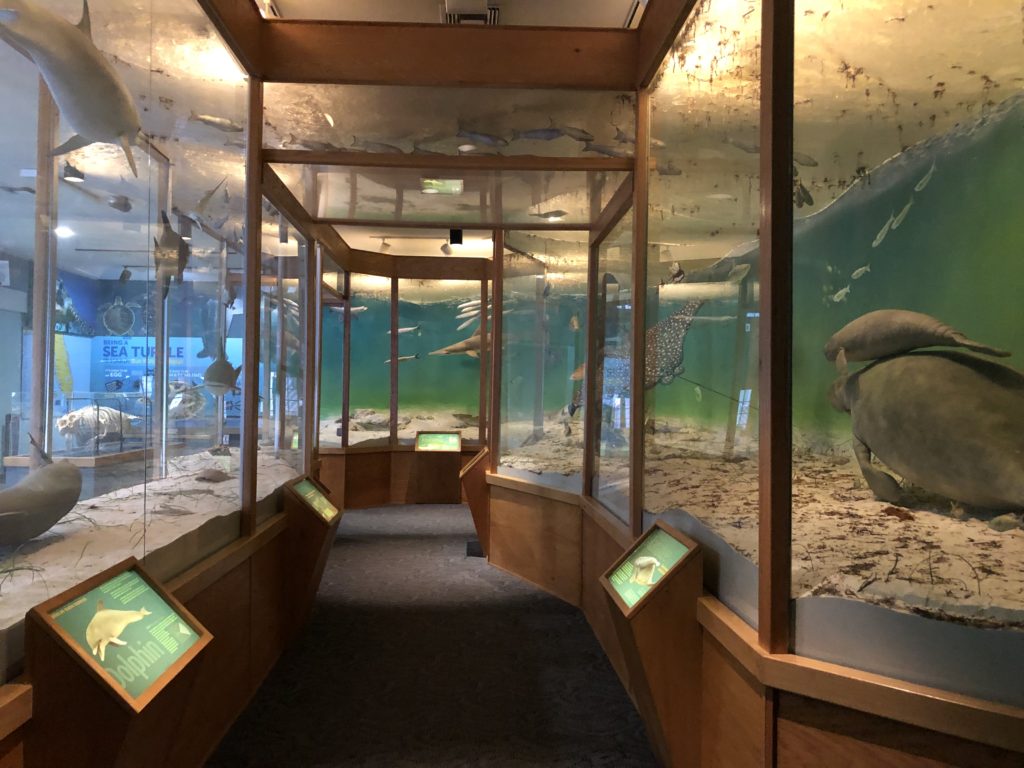
It is filled with life-size models of Florida’s wildlife. There is a manatee and her baby, a Kemp’s ridley sea turtle, dolphins, manta rays, sharks, and plenty of fish.
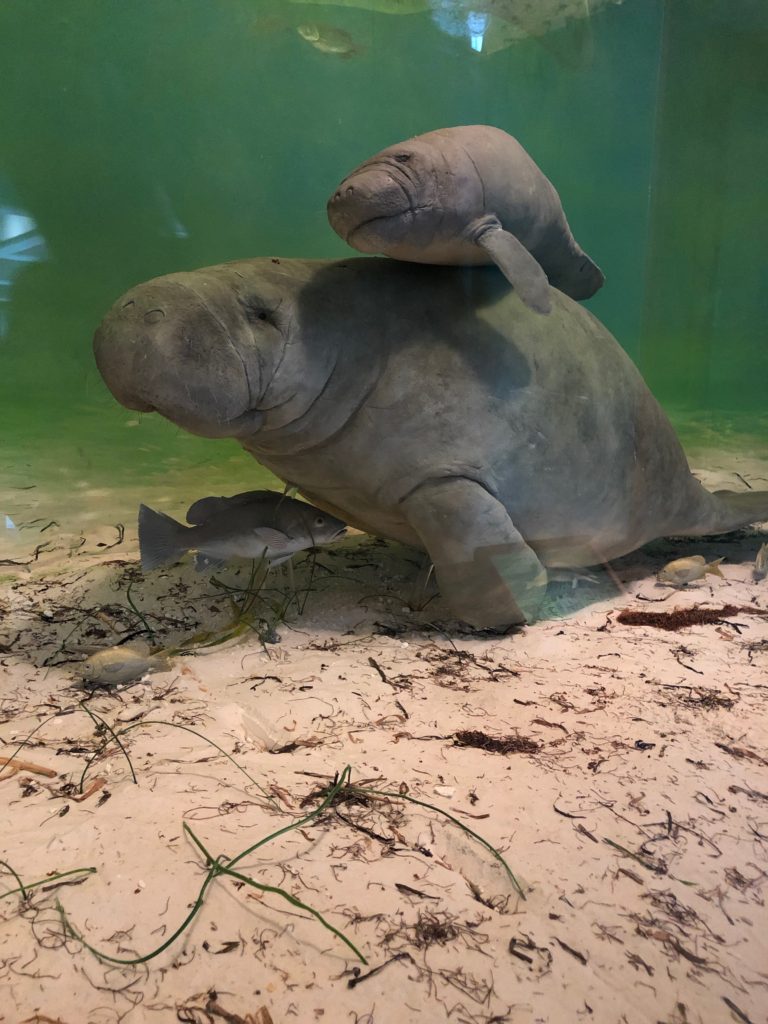
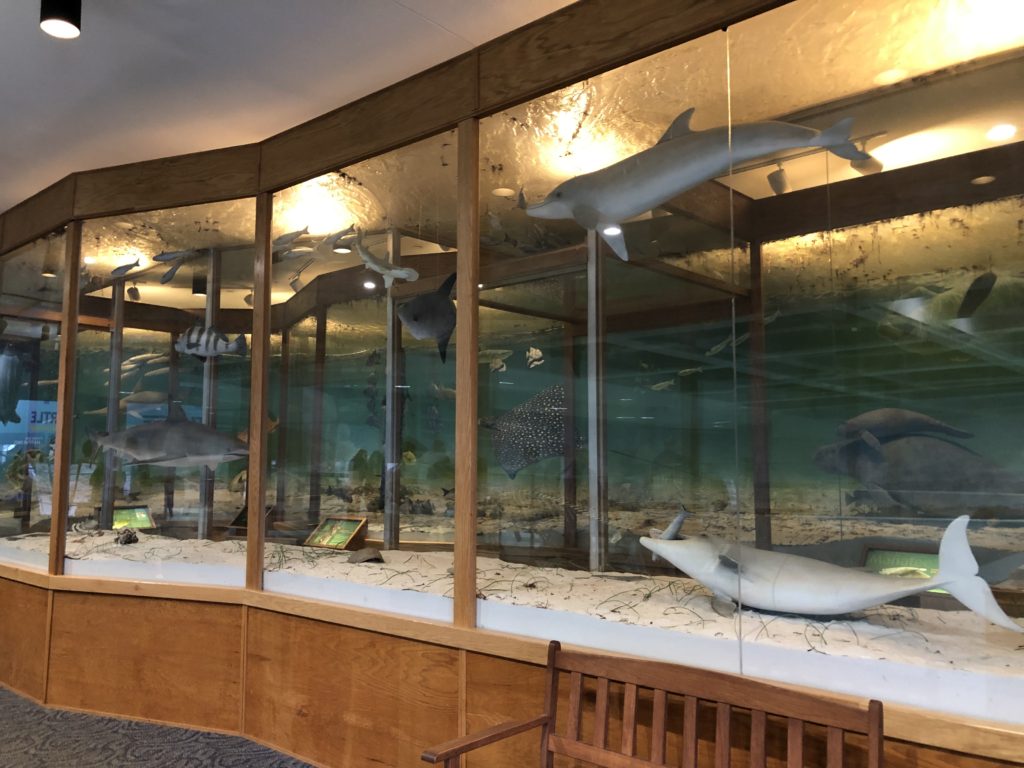
Where else can you see a full size replica of a dolphin skeleton and a manatee’s?
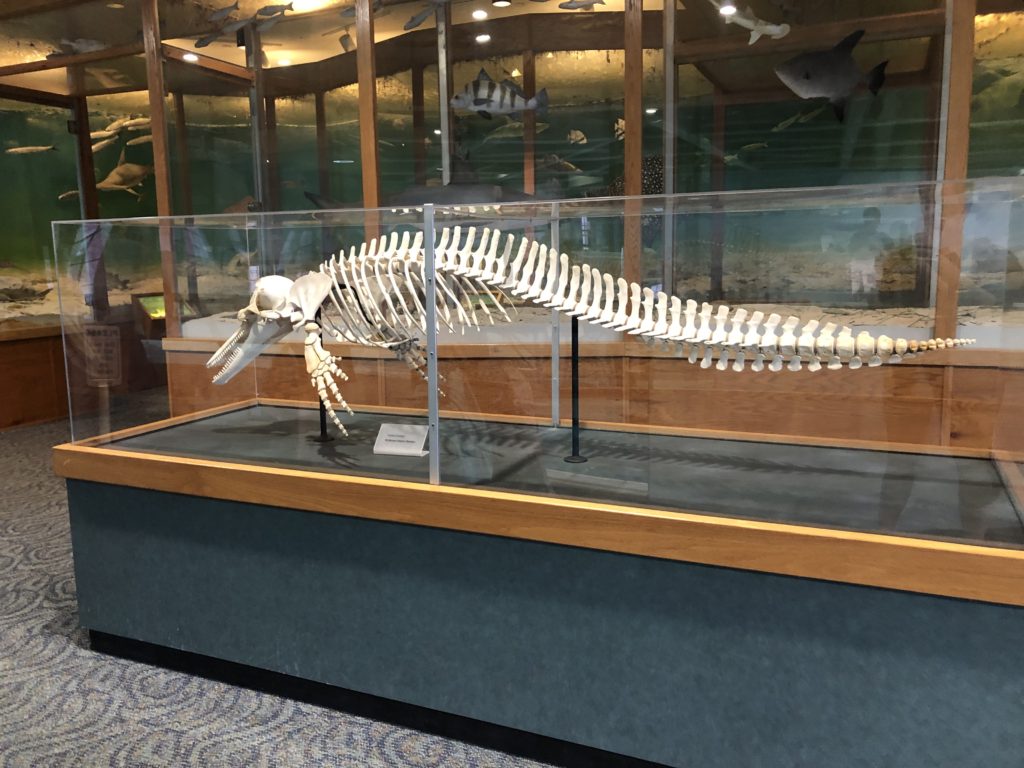
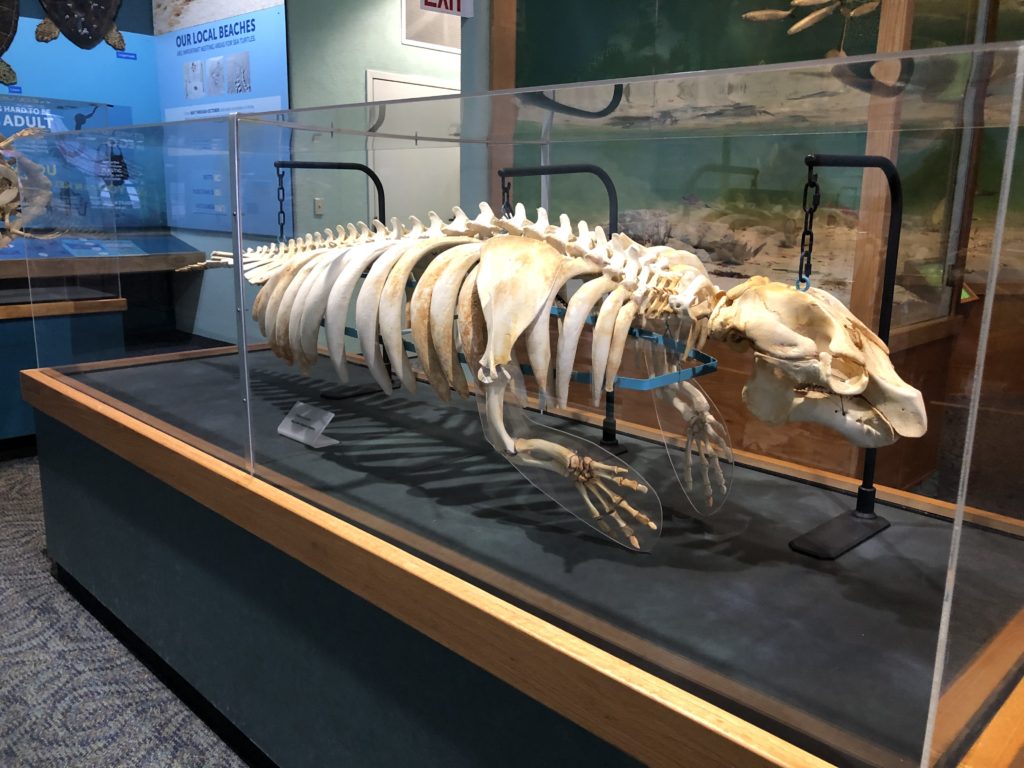
Did you know that being a sea turtle is hard? At each stage of a sea turtle’s life, from egg to hatching to becoming an adult, they are faced with a handful of obstacles they must overcome. Whether it’s poachers when they are eggs, birds trying to eat them as they make their way to the water after hatching, or mistaking a plastic bag as a jellyfish when they are adults, this exhibit lists many things you can do to help sea turtles.
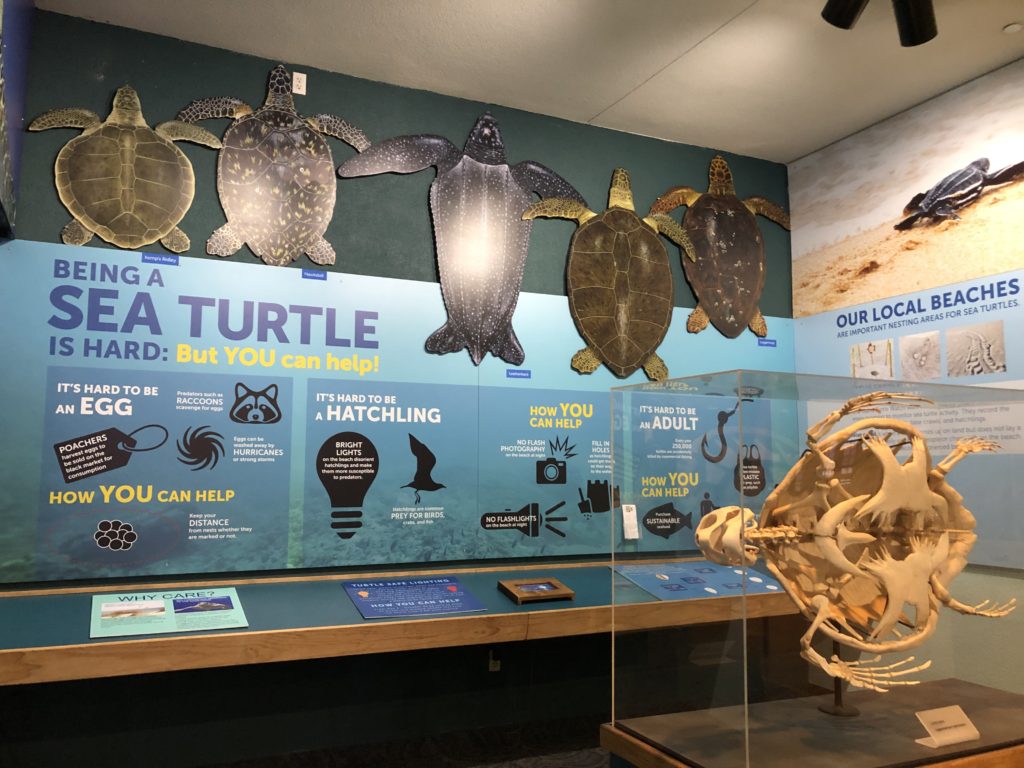
The 66,000 gallon Parker Manatee Rehabilitation Aquarium opened in 1993. The manatees that are in the aquarium are receiving medical help and are awaiting their opportunity to be released back into the wild. There is above and underwater viewing so you can see firsthand what goes into the special care of these animals.
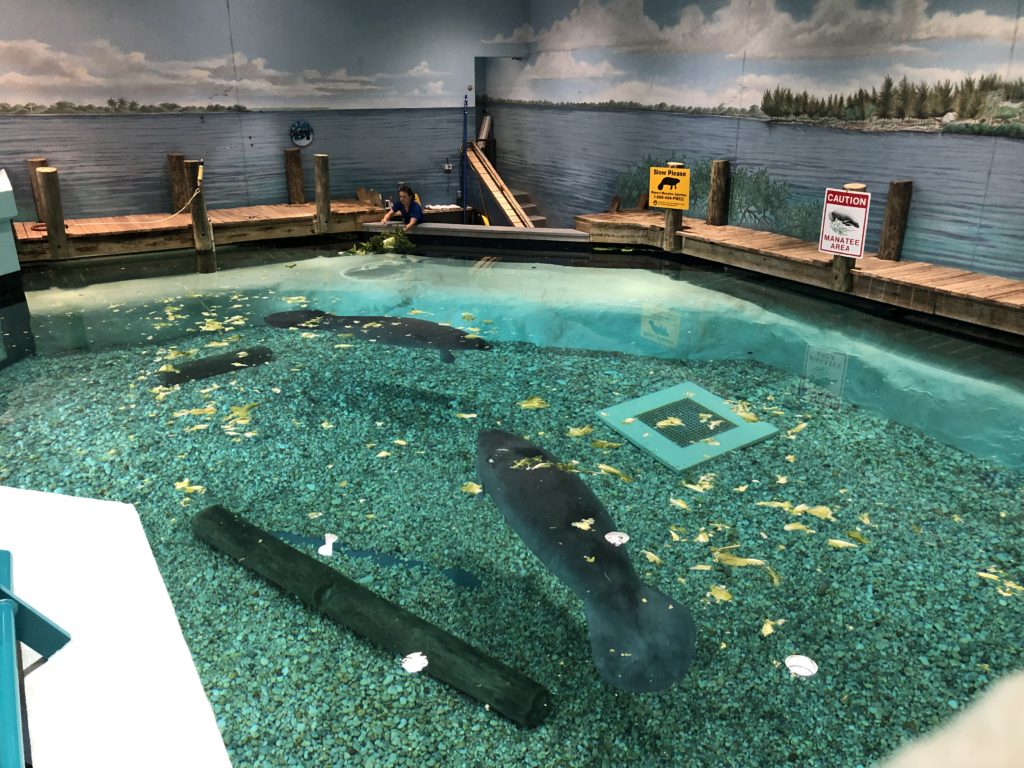
Throughout the day, they offer a 25 minute manatee presentation all about their habitats and nutrition. It was a great opportunity to learn what goes in to the daily care of the manatees.
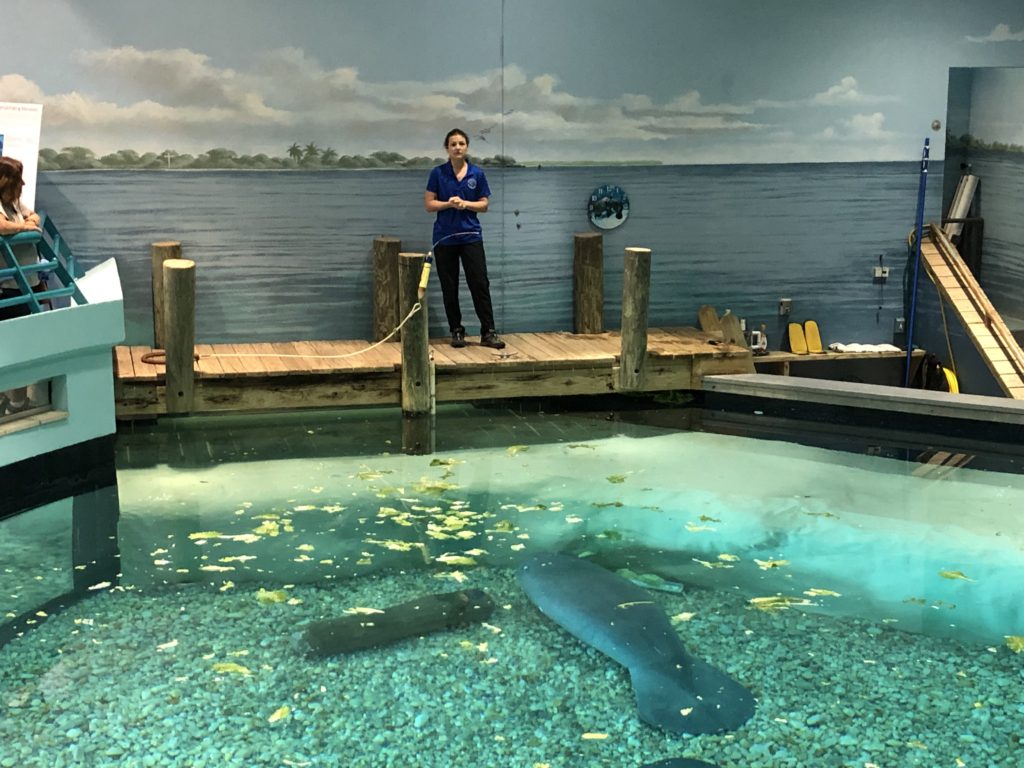
The aquarium has housed over 35 manatees as part of their rehabilitation program. This includes their most famous manatee, Snooty.
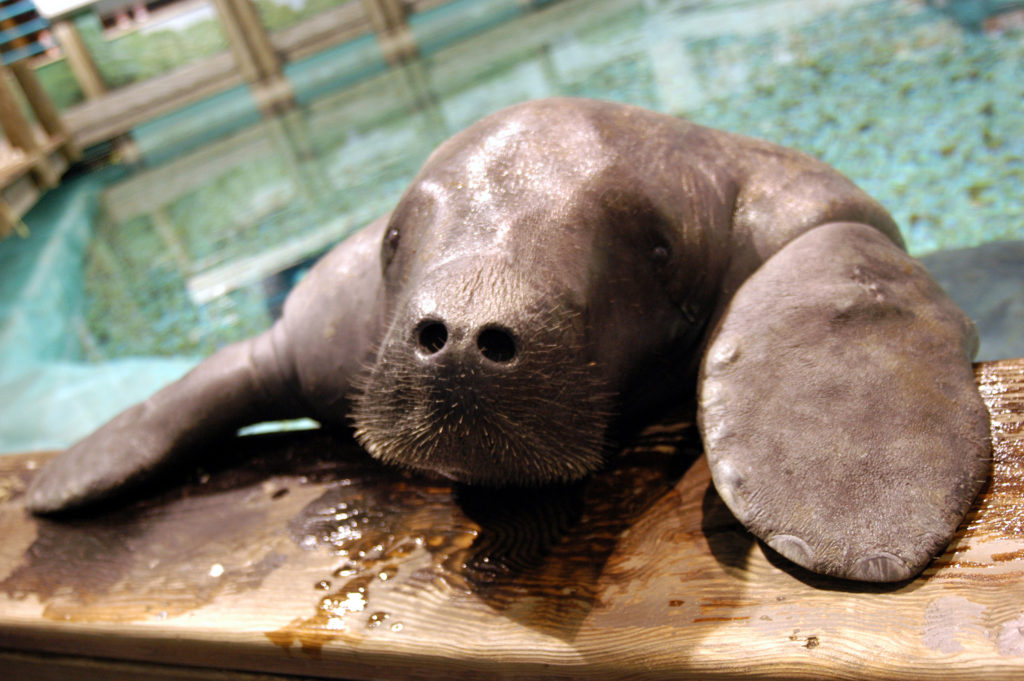
Snooty, a West Indian manatee, arrived at the museum in 1949. The aquarium would become his permanent home as Manatee County’s official mascot. Unfortunately, he passed away in 2017 at a record breaking age of 69 years old; this was the oldest known manatee in the world.
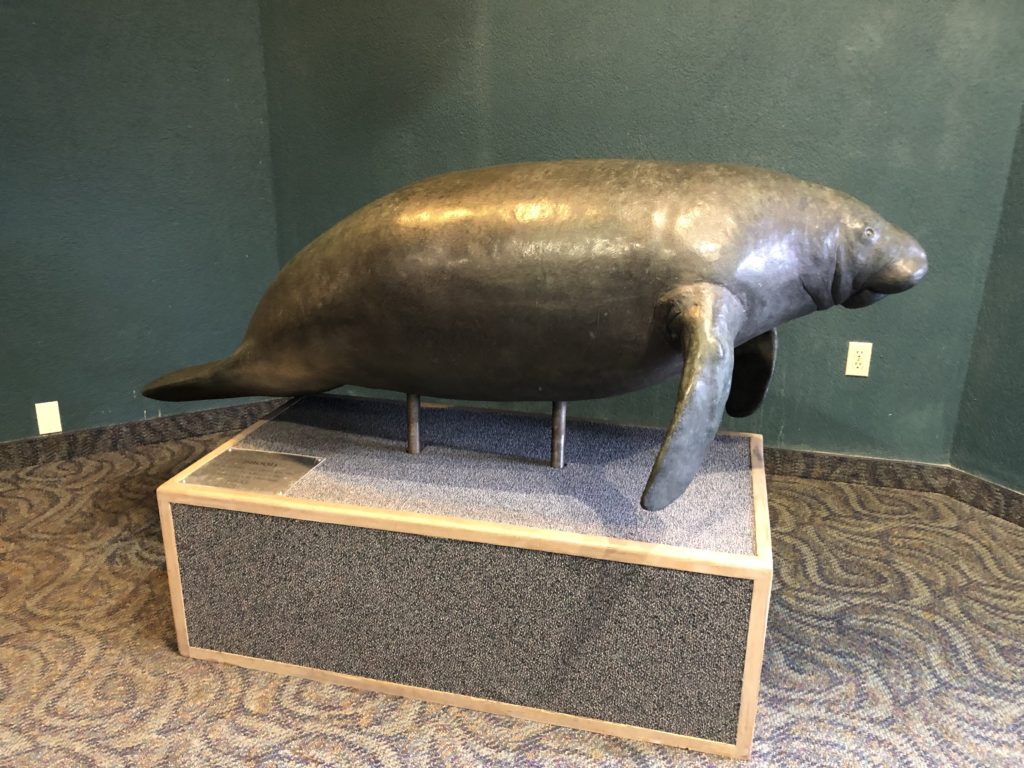
And the Rest is History…
Or is it?
Not here! The Bishop Museum of Science and Nature is looking forward! Due to open in 2019, the North Education Center and Mosaic Backyard Universe will help connect museum visitors to the world around them in a whole new way.
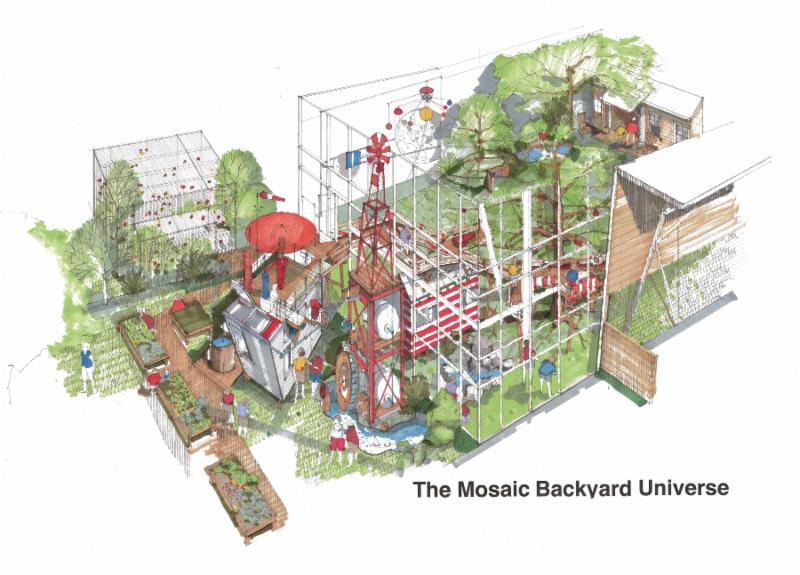
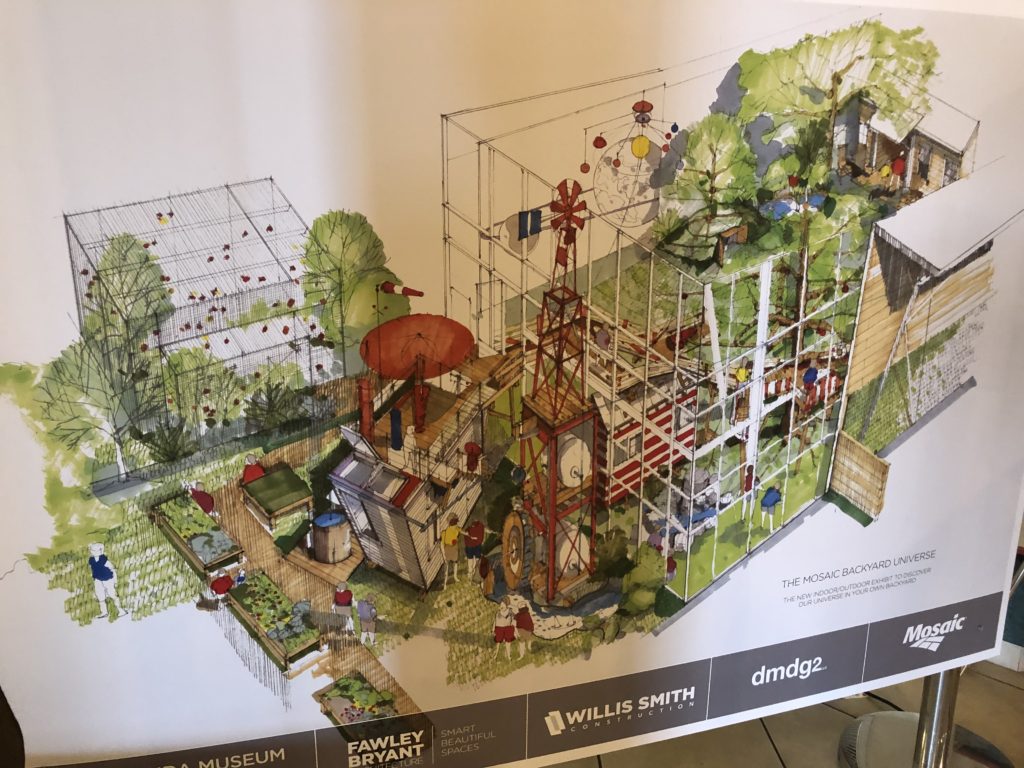
The Mosaic Backyard Universe is modeled after a typical backyard setting and offers hands-on education surrounded by some of the simplest wonders of nature – plants, animals, rocks, dirt, water, and of course, the weather.
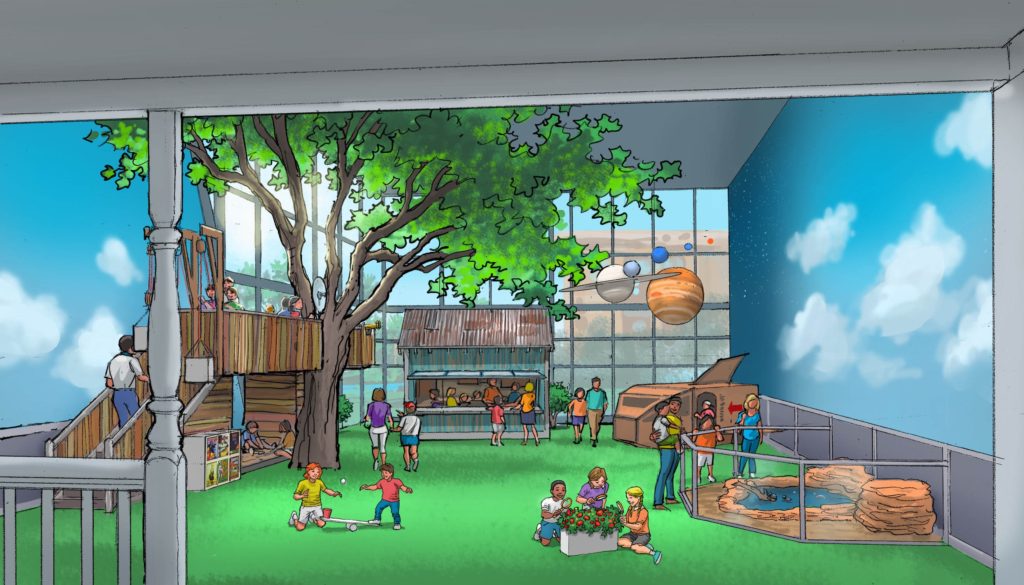
As homeschooling parents who love anything having to do with the great outdoors, we know how powerful it is for children to be immersed in nature. It is important for us that our children have an understanding, and appreciation, of both science and nature, and how it connects to their everyday life. We cannot wait to visit the Mosaic Backyard Universe on our next visit to Florida.
Know Before You Go
The Bishop Museum of Science and Nature is located at 201 10th St. W, Bradenton, FL 34205. Conveniently located just 20 minutes north of Sarasota-Bradenton International Airport and 45 minutes south of Tampa International Airport.
Hours are:
- Monday – CLOSED
- Tuesday through Saturday – 10AM – 5PM
- Sunday – Noon – 5 PM.
There is both street parking and garage parking available. You may park on 10th Street, right out front of the museum, for up to three hours, or there are also several parking locations in downtown Bradenton that are convenient to the museum, including a county parking garage at the corner of Manatee Avenue and 10th Street West.
Admission is:
- $19 for an adult
- $17 for Seniors
- Children ages 12-17 are $14, ages 5-11 are $10, and under the age of 4 are free.
- Florida teachers, and active U.S. military (with proper ID) are also free
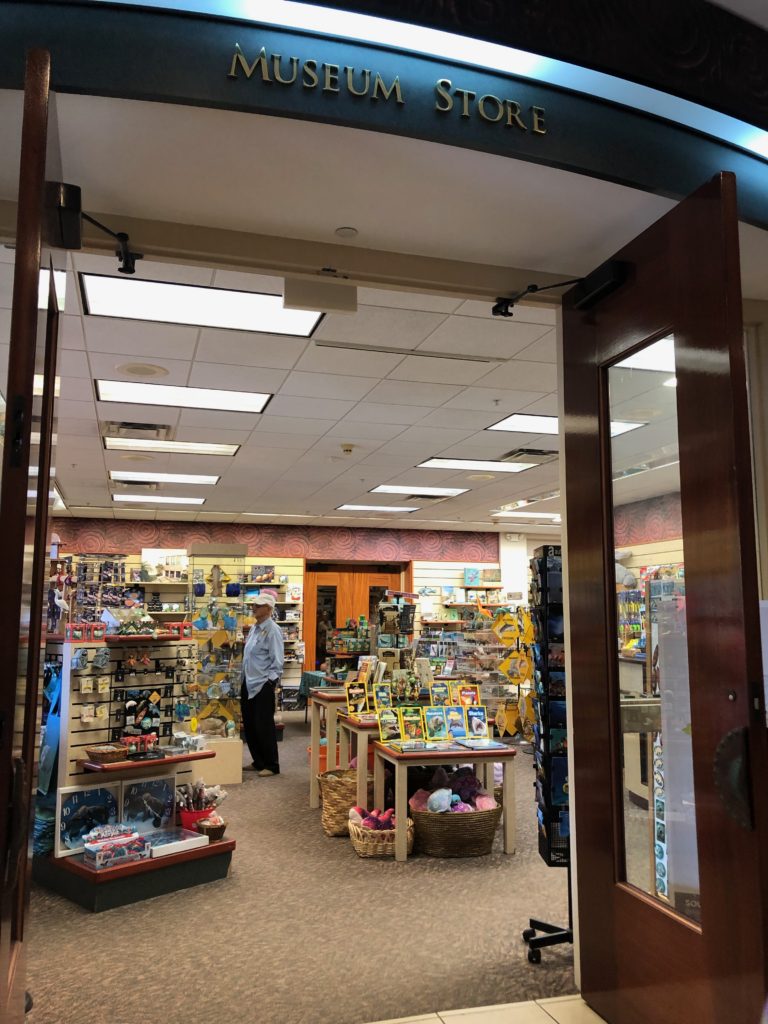
The Museum is located steps from Bradenton’s vibrant downtown, family friendly restaurants, and the beautiful 1.5 mile Bradenton Riverwalk, complete with a family fun zone and splash pad.
PERHAPS you could make a day of exploring everything the Bishop Museum of Science and Nature, and Bradenton, have to offer.
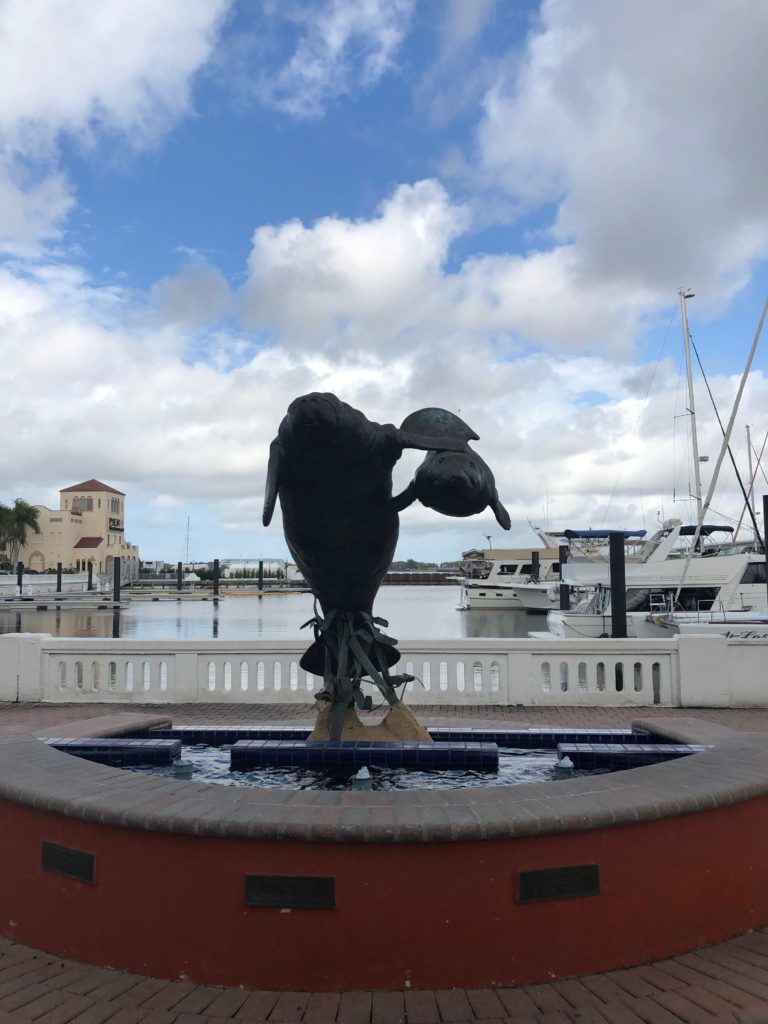
Read about our other adventures in Florida:
- Mote Marine Laboratory & Aquarium (Sarasota)
- The Ultimate Guide to ZooTampa at Lowry Park (Tampa)
- Top 10 Toddler Friendly Rides at LEGOLAND Florida (Winter Haven)
- Sand & Sea Vacation Rental – Anna Maria Island (Family-friendly!)
- Happy Paddler Coastal Island Kayak Eco Tour (Anna Maria Island)
- Bradenton Beach Marina Dolphin Eco Tour (Anna Maria Island)
- EVOS Restaurant (South Tampa)
- How Our Family Of 5 Flew Roundtrip To Florida For Less Than $325
Be sure to check out our Top 30 Gift Ideas for Travelers. It is full of unique ideas to give to those in your life who love to travel… or to add to your own personal carry-on. We’ve even included the one item we won’t go to Disney without, it might surprise you!

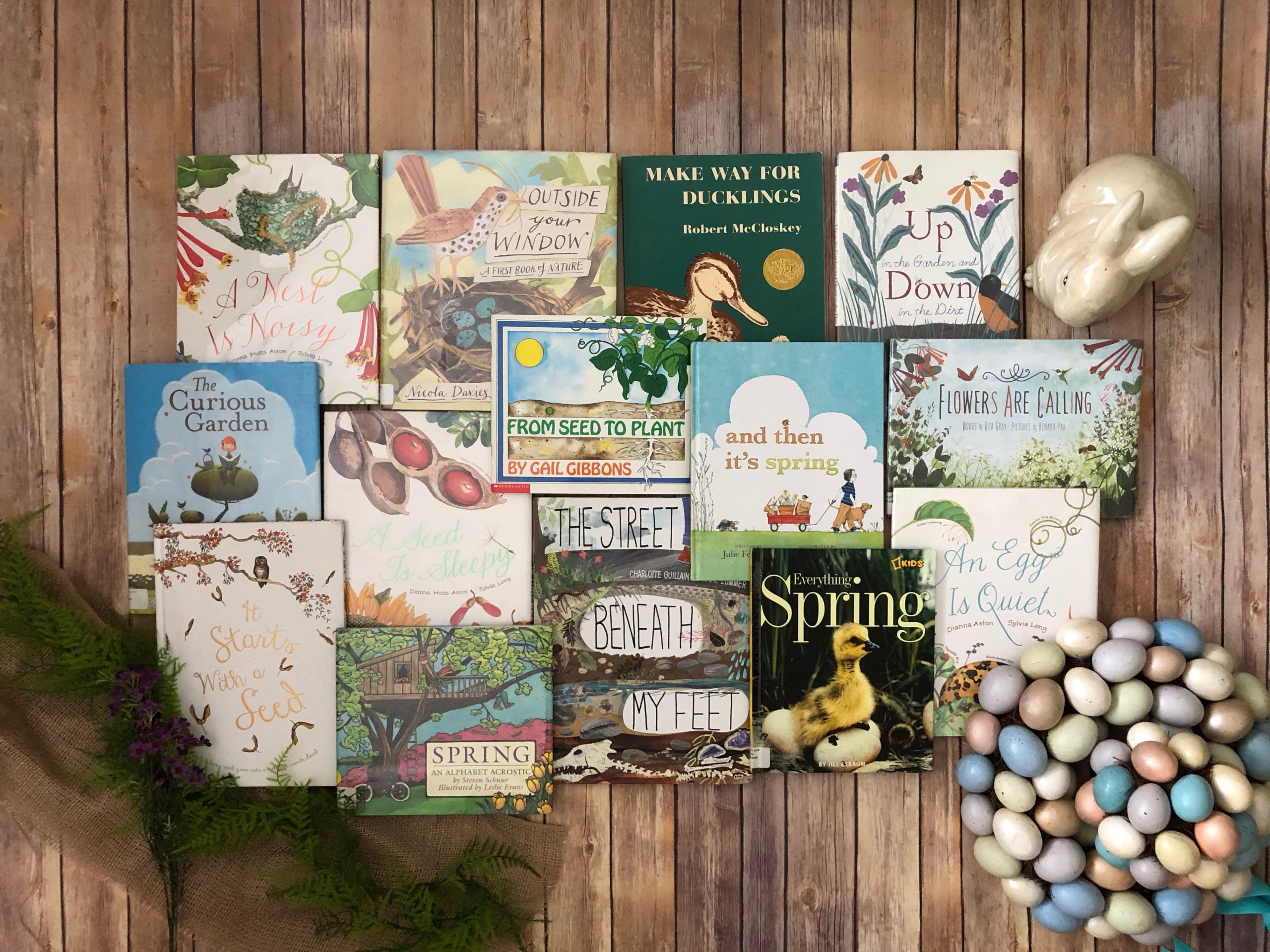


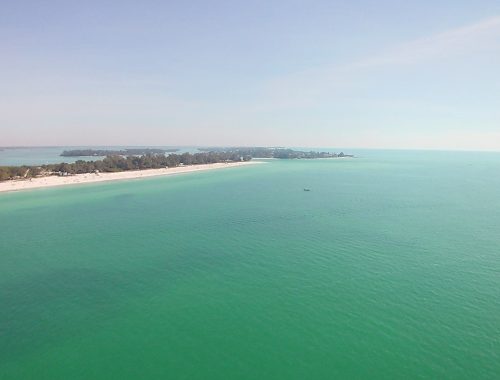
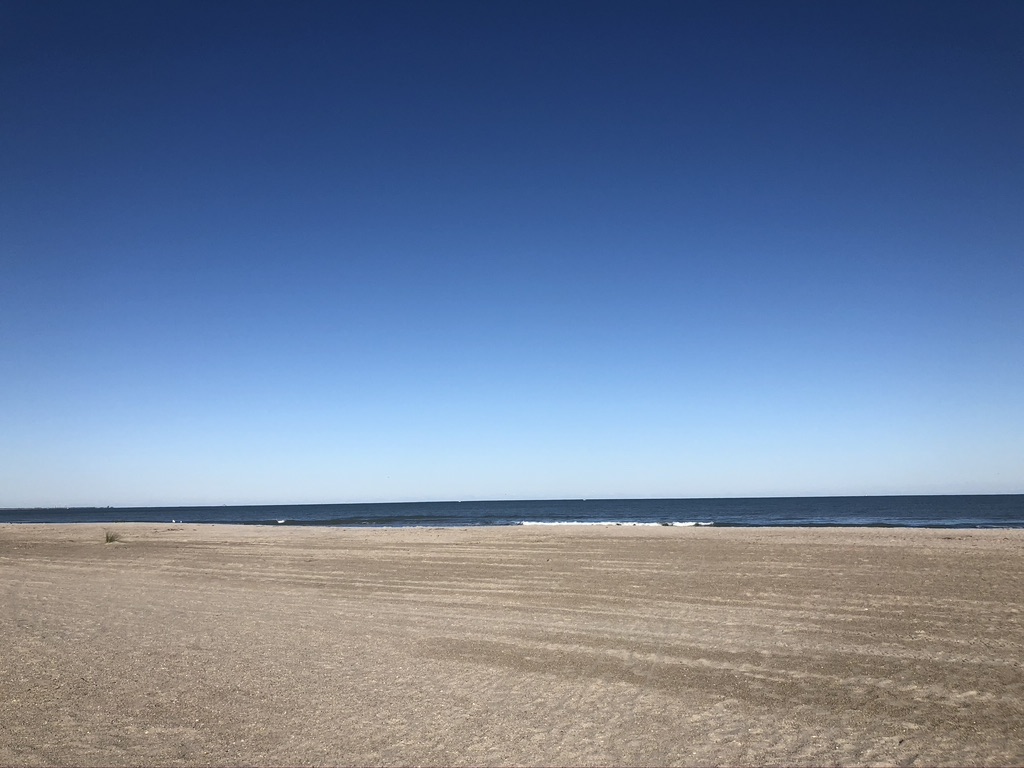
40 Comments
Harmony, Momma To Go
we just drove through that area (from Tampa to Naples) I wish I would have know about this place! I would love to see manatees up close. So amazing that they rehab them – we were just at the Clearwater Marine center seeing where they rehab dolphins, turtle, sting rays, it was so amazing for the kids to see!
Trisha
What a bummer! Maybe next time! It is incredible everything they do to help the manatees.
We love the Clearwater Marine Center too! My oldest daughter is in love with Winter and Hope. She says it was one of her most favorite trips ever! There is so much to see and do in Florida!
Lauren (Where the Wild Kids Wander)
Wonderful! We love museums like these. And any place to see some manatees is a place for me!
Trisha
It was so amazing to see them up close! They are so graceful in the water! We can’t wait to see their next addition when it opens!
Heather
This looks pretty amazing. I will keep in mind if we are ever in that area.
Trisha
It is absolutely worth a stop! There is a ton of stuff to do in downtown Bradenton also. It’s a great city!
Briana
What a great place to visit!! I’m going to add this to my list for our next FL trip!!
Trisha
We couldn’t agree more! That’s a great idea! Let us know what you think of it when you go!
Kristi
Wow! So much to do! The manatee photo is adorable. My kids would definitely be impressed with the megalodon teeth.
Trisha
It is crazy to see those teeth up close! Almost all of them are larger then your hand!
Molly Callister
Looks like a great museum! My kids would love it.
Trisha
If you are ever in the area, you should check it out! Our kids loved every minute of it! We can’t wait to go back to see their new addition, the Mosaic Backyard Universe.
Lisa Manderino
Great Video, It’s cool that they have real manatee’s there!
Trisha
Thank you! They do so many great things for the manatees at the rehab aquarium. All of which leads to learning more about them and how they live. It was a great experience!
alison
That’s a great museum spanning so many different eras. I love that there are manatees, cows of the sea. It would be hard to pull my kids away from them for sure.
Trisha
Our kids loved the aquarium area! I lost track of how many times we went back to that area. 😉
Missy
We enjoy museums. I really liked the underwater viewing area.
Trisha
The kids really enjoyed the underwater viewing area. Even though they are large animals, they just glide so effortlessly through the water.
Hera
Haven’t been to a planetarium in awhile, need to go!
Trisha
The digital equipment they have is absolutely incredible. It was a visit long overdue for us too!
Heather
What a great museum to learn about the past in Florida! I know we have traveling exhibits, but wouldn’t it be great if we could switch museums from different states for awhile.
Trisha
Heather, that is an AWESOME idea! I’ve always wondered what museums keep in their storage, but to be able to see exhibits from museums around the world would be incredible!
Life Beyond Zebra
Wow. This looks so fun! My boyfriend loves dinosaurs. I will have to take him someday.
Trisha
It was a blast! There are so many bones and fossils on display that were found locally, in Florida. I love being able to make that connection when you can see it in person. I hope your boyfriend enjoys it!
Amanda Howe
Thanks for sharing. We are worldschooling our girls and this looks like a great place to go!
Trisha
You’re welcome! How lucky you are to be able to world school your daughters! That sounds like such an amazing, and life changing experience! Way to go, Momma!
jen
wow so much to see and do!!! I love it!
Trisha
Thank you! It was one of our favorite museums that we have been to recently.
Bria
This post was soooo informative! Thank you for sharing!
Trisha
You are very welcome! We love sharing everything the South Florida Museum has to offer!
Julie Gazdecki
I seriously need to plan a trip to see my mother-in-law so we can visit some of these great places!!
Trisha
Absolutely!! It’s been tempting to load the kids up and just start driving south! 😉
Katie
Wow! This museum looks huge! I would love to visit the manatees there.
Trisha
It was pretty, big but not overwhelming. You can make your way through it within a few hours, without feeling like you didn’t get to see everything. The layout is done very well and the manatees are worth the trip alone!
Tracey Skafidas
I will definitely have to check this place out the next time we’re in the area!
Trisha
It is totally worth the stop!
Lara
Wow, there is so much to do and see at this museum. You could definitely spend a whole day here! When I saw the Spanish courtyard, I was immediately transported back to Madrid. It’s great when a museum can do that. Thanks.
Trisha
Absolutely! Each section of the South Florida Museum made it feel like you were being transported to a different time. They also use the Spanish Courtyard for weddings. I’m thinking I might need a vow renewal there! 😉
T.M. Brown
Looks like I have a reason to go visit Bradenton! I love history museums and seeing “how things used to be,” as well. I’m a huge fan of manatees, as well. Thanks for sharing!
Trisha
Yay for Bradenton, history, AND manatees!!